

How Big Are Yachts? 5 Types Explained (With Numbers)
Yachts can come in a variety of sizes and weights. Before you purchase a yacht, you must know what size yacht you need.
The size and weight of the yacht that you need will depend greatly on what your intended use is for the yacht that you are purchasing.
Table of Contents
Here’s everything you need to know about the weight of yachts:
Here’s an Idea of How Big Yachts Are:
The term “Yachts” refers to a pleasure vessel that is at least 30 feet in length and has some type of cabin with some amenities. The biggest luxury yacht is 590 feet (180 meters) and 13,136 gross tons.

What Do We Mean When We Talk About Weight?
There are two types of weight for a boat, dry weight, and wet weight.
Dry weight is the weight of the boat without any fluids in the tanks. Wet weight is the weight of the boat with the fluids in the tanks.
You can also have a loaded weight, which is the wet weight, including any additional toys or equipment you have stored onboard.
What Do We Mean When We Talk About Length?
There are many different ways to calculate a boat’s length. For this reason, you want to make sure that you have a clear idea of what the length of your boat really is.
The boat’s registered length is generally the maximum overall length, which is the length on deck plus any bowsprit or swim deck. The length of the boat on the waterline is also an important boat characteristic that you should know.
Due to the shape and construction of the hull, these numbers may differ.
For example, if you have a boat that has a 50-foot deck with no bowsprit, your registered length will be 50 feet.
Some boats are measured using “LOA,” otherwise known as length overall.
Why Is Knowing The Weight And Length Important?
The most important reason to know your boat’s weight and length is for when you choose to shop for trailers or even to determine if your vehicle can haul it.
If you try to tow a boat without an accurate representation of the weight or length, you can ruin your vehicle’s engine and even your towing equipment, not to mention have serious safety issues.
Another reason to know about your vessel’s weight is to know how much you can bring for your trip without packing more than the maximum weight allowed.
It is also important to know your weight and how it can affect your boat, especially when it comes to speed.
Different Types of Boats and Their Average Weight and Length
Below are some different types of boats and their average size and weight, and the factors that go into them.
1. Luxury Yacht

Yachts are normally classified as any watercraft that can be used for pleasure or sport and can range from 30 ft to over 100 ft.
While a yacht can be as small as 30 ft. long, a yacht is often considered a cabin cruiser until it is 39 ft. or more, then it is considered a proper yacht.
A yacht would be considered a large yacht once it’s length is over 79 feet. A yacht is considered a superyacht or megayacht if it is over 115 feet long.
The yacht the holds the record for being the longest yacht is 590 feet long. This yacht is called the “Azzam” and has held onto its title for over 5 years.
Because of the wide variety of sizes, the weight can vary greatly when it comes to yachts, and it is hard to nail down an average.
Some more distinctive differences between yachts include:
- These yachts are single-deck yachts with one living quarter below . They are often sleek and sporty.
- Also known as a sedan bridge or sport bridge yacht. This yacht has an area on top of the superstructure that features a view all the way around the vessel.
- This deck up top can offer a control station or even lounge seating, depending on its size.
- Also known as a pilothouse motor yacht, cockpit motor yacht, or sky lounge. This term can be used for any large recreational vessel that is motor powered.
- Usually, this means a multi-deck vessel similar to a flybridge but instead has a large interior deck.
- Often classified as a mega yacht, which is normally any vessel 80 ft. or more. This vessel is exactly what it sounds like.
- It is a yacht with three levels of enclosed living space.
- A sportfishing yacht is any yacht that is geared towards fishing.
- They often have areas designated to storage for rods, bait, tackle, and even areas to store the day’s catch.
2. Sailboats

Large sailboats are yachts propelled by sails and can be found in lakes, rivers, and even out on the ocean. Today, they almost all have auxiliary power in the form of an engine.
While the weight and length of a sailboat can drastically vary, the average weight of a sailboat is about 8,800 pounds. This weight does not include added gear, equipment, or fluids.
The weight will vary greatly depending on the length of the sailboat. Sailboat lengths can range between 8 feet to 472 feet.
The 472-foot sailboat also carries three masts that tower at over 91 feet each. This can definitely add more weight than the 8-foot vessel.
Listed below are 6 examples of sailboats and their weights and lengths:
- Catalina 16 LOA: 16 ft. 4 in. Hull Weight: 430 pounds
- Hunter 22 LOA: 21 ft. 4 in. Hull Weight: 3,200 pounds
- C&C 27 LOA: 27 ft. 4 in. Hull Weight: 5,180 pounds
- Erickson 28.5 LOA: 28 ft. 7 in. Hull Weight: 8,500 pounds
- Pearson 39 LOA: 39 ft. 3 in. Hull Weight: 17,000 pounds
- Swan 48 LOA: 47 ft. 11 in. Hull Weight: 36,000 pounds
3. Speed Boats (Cigarette Boats)

Speed boats are sleek and built for achieving high levels of speed.
These boats are not made for watersports and should not be confused with ski boats.
A speed boat’s average weight is slightly less than that of a sailboat at roughly 8,000 pounds.
Some of the factors that determine a speed boat’s weight can include their length, engines, and sleekness.
Listed below are some examples of speedboats and their weights and lengths:
- Cigarette 38 Top Gun LOA: 37 ft. 8 in. Hull Weight: 9,175 pounds
- 32 Thunder Cat LOA: 32 ft. Hull Weight: 5,400 pounds
- M35 LOA: 35 ft. 4 in. Hull Weight: 9,250 pounds
4. Deck Boats or Pontoon Boats

Deck boats and pontoon boats both have large decks and are mostly intended for recreational use.
Pontoon boats have the lowest average weight at 3,100 pounds .
Because they do not have large hulls, they can be lighter and cut across the water easier than boats with larger hulls.
Listed below are some examples of deck boats and their weights and lengths:
- NauticStar 211 Angler (Deckboat) LOA: 20 ft. 9 in. Weight: 2,100 pounds
- Stingray 212SC (Deckboat) LOA: 21 ft. 11 in. Weight: 3,100 pounds
- Hurricane SunDeck 2690 LOA: 26 ft. 4 in. Weight: 4,475 pounds
5. Cabin Cruisers

Cabin cruisers are large boats that are sometimes looked at as mini-yachts.
These boats allow for sleeping accommodations and other luxuries afforded in their cabin space.
Like the sailboat, a cabin cruiser’s weight can vary. However, they do tend to have a smaller range than sailboats.
The average weight of a cabin cruiser is about 8,700 pounds.
One of the major factors in the weight of cabin cruisers is the size of the sleeping accommodations below. Some models of cabin cruisers can even sleep up to 10 people.
Listed below are some examples of cabin cruisers and their weights and lengths:
- Larson 274 Cabrio LOA: 28 ft. Dry Weight: 6,001 pounds
- Rinker 301 Express Cruiser LOA: 32 ft. Dry Weight 7,640 pounds
- Bayliner 285 SB LOA: 28 ft. 9 in. Dry Weight: 8,056 pounds
Picking a Yacht:
Yachts can vary in a wide array of sizes, weights, styles, and even purposes.
You can race them, fish on them, and cruise around at an easy pace.
You can take a day trip or even take personal cruises that last days or weeks.
With ample deck and cabin space that offers activities, sunbathing, kitchens, lounges, and sleeping quarters, a yacht is often the most comfortable way to experience the open water.
To choose a yacht, you will want to know what type of yacht you are looking for and what you want to use it for.
You also want to make sure when picking a yacht; you make sure you keep the weight and length in mind to make sure you have a proper towing vehicle and trailer for your vessel.
Click to share...
Yachts are a category of boats and ships that are primarily used for leisure activities. They range in size from small, cabin-equipped boats to large, luxurious vessels complete with crew quarters, multiple decks, and opulent amenities. Unlike other types of boats, yachts are often associated with comfort and luxury, offering a high level of accommodation and equipment. They can be motor-powered or sail-driven and are designed for cruising and longer voyages, providing everything needed for extended stays on the water. Yachts are popular for private excursions, social events, and competitive sailing, reflecting a lifestyle of recreation and exclusivity on the seas.
Yachts began as vessels used by the Dutch Navy to chase pirates and privateers. The term "yacht" comes from the Dutch word "jacht," meaning "hunt." The concept shifted when the wealthy started using these boats for pleasure cruising. By the 20th century, yachts had become a symbol of luxury and opulence, with larger and more extravagant designs. Sailing yachts gained popularity for sport and recreation, while motor yachts became the choice for those seeking comfort and travel over longer distances. This led to a rise in custom-built yachts, designed to cater to the specific desires of their affluent owners.
Yachts are set to become even more sophisticated with advancements in technology and sustainability. Expect to see solar panels and hybrid engines for cleaner cruising, and cutting-edge navigation systems for easier handling. Yacht designs may prioritize eco-friendly materials and self-sustaining features like water purification systems. Innovations like the Oceanco NXT reflect the industry's move towards sustainability without compromising luxury. As society becomes more environmentally conscious, yachts will likely serve as a testament to the possibility of luxurious yet responsible travel. They will continue to be emblems of status and comfort, but with an increasing emphasis on harmony with the marine ecosystem.
Yachts are classified by size into several categories: Day sailing yachts are usually under 20 feet (6 meters); Weekender yachts span 20 to 30 feet (6 to 9 meters); Cruising yachts range from 30 to 50 feet (9 to 15 meters); Luxury yachts are typically 50 to 100 feet (15 to 30 meters); Superyachts extend from 100 to 200 feet (30 to 60 meters), and Megayachts exceed 200 feet (60 meters). These classifications reflect the yacht's size-related amenities and operational needs.
A yacht crew structure includes the captain, who oversees all operations; deckhands for maintenance and handling lines; engineers for engine and systems maintenance; a chef for meal preparation; and stewards or stewardesses for interior service and guest care. Larger yachts may also have first mates, navigators, additional engineers, specialist chefs, and a purser to manage finances and provisioning. Crew size increases with the yacht's size and complexity.
The most prestigious yacht-building companies include Lürssen and Blohm+Voss, renowned for their custom-built superyachts; Feadship and Amels, known for craftsmanship and innovation; Azimut-Benetti and Ferretti Group, celebrated for Italian design and luxury; Sunseeker, which offers high performance and bespoke finishes; and Heesen, respected for their high-quality Dutch engineering. These companies have established reputations for excellence in the yachting world.
Wikipedia - Yacht Wikipedia - Superyacht
* Under Development *
- Brokerage New Construction How to Buy How to Sell
- Yacht Fleet Yacht Catalog Charter Marketing Destination Guides
- Financial Services Payroll & Accounting Payroll Service Process Logistical Support Admin Services Crew Admin
- Job Descriptions Crew FAQ
- About Sitemap
Length Is Only One Measure of Luxury
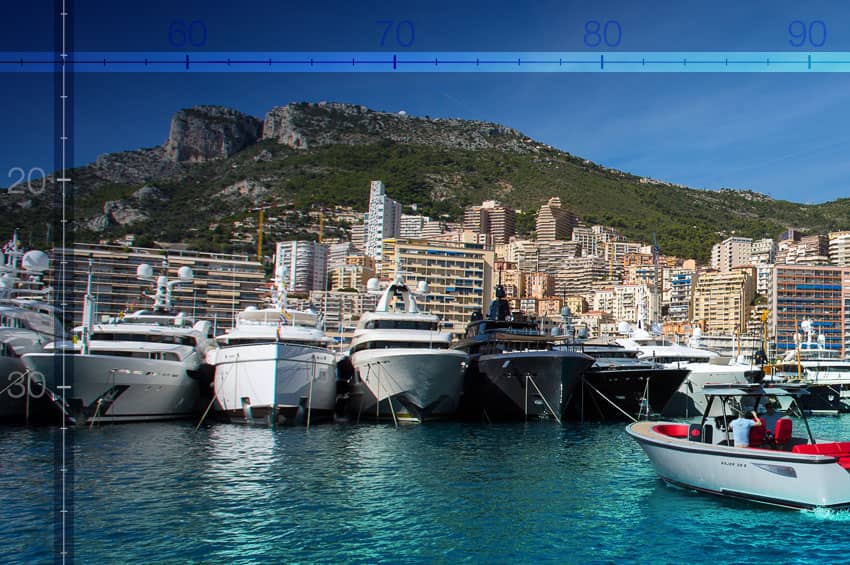
As the Yachting industry continues to expand the number of vessels in the mega and super yacht length categories, additional measures of dimension are often overlooked.
Crew aboard luxury yachts deal with the challenges of cooking, cleaning and maintaining on a daily basis are aware of the importance of internal volume. The ease of movement and workspace comfort are driven by measures in addition to LOA (length overall).
The key to making vessels of similar length “feel big” is internal volume. The internal volume is a function of length, breadth and height. In walking the docks, comparison of side by side vessels of equal length immediately identifies the variables of beam and height. Yachts between 40 meters and 50 meters could feasibly have equivalent internal volume dependent on beam and the number of decks.
Length in and of itself can be a deceptive figure. The point along the hull where length is measured can vary. Any point other than the load line can mistakenly include bow overhangs, swim platforms, rudder dimension. The beam or breadth of a vessel is also measured on the outside of the hull mid ship at the waterline.
How the length, beam and height are combined results in the actual internal volume and the feeling of size and comfort aboard. Internal layout and the integration of alfresco areas are design challenges to give guests the impression of a bigger yacht and add to the feeling of comfort. The addition of swim platforms and sundecks can also provide an illusion of more space to the guests.
While comfort and appearance are criterion for guests, crew are impacted by the internal volume in the ease of providing service to those guests. The galley and engine room are particularly critical areas for adding volume – both for ease of use and safety. Both areas can be less than hospitable even in yachts of super length.
Design of workflow, access, storage, and movement benefits from the addition of volume provided by additional beam. The design challenge in every yacht is to have adequate service spaces without compromising the size and comfort of guest cabins.
Internal volume is measured in gross tons (GT) displacement. The internal capacity has its origin in shipping. It quantifies all space available for cargo, crew, passengers, stores and mechanics. In the t shipping industry the space that remains after subtracting internal space for everything but cargo is the space available for cargo transport – the earning power of the vessel.
Internal volume not only gives the impression of a bigger yacht, but also contributes to the earning power of the yacht by enhancing ease of use for both guests and crew.

Engineering License Changes
The MCA has restructured the engineering certifications. The MEOL course has been done away with, and the AEC course made mandatory and more thorough. Luxury Yacht Group explains all these changes, what engineers progressing through the ranks can do now, and how Y ticket holders can convert their licenses over to the structure.
14 Mar 2018
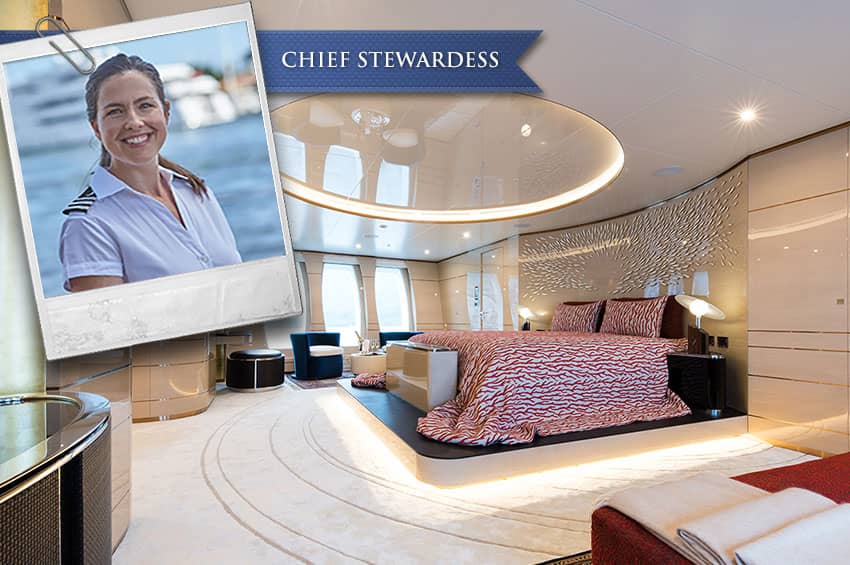
A Day in the Life Series – Chief Stewardess
For a yacht to run smoothly, it requires many working parts, and the interior department is a large component of this. The chief stewardess oversees this department and makes sure all the stewardesses onboard know what their tasks and responsibilities are. The interior department is largely in charge of the guest services whilst they are onboard, and responsible for interior maintenance of the yacht when they are not.
18 Dec 2017
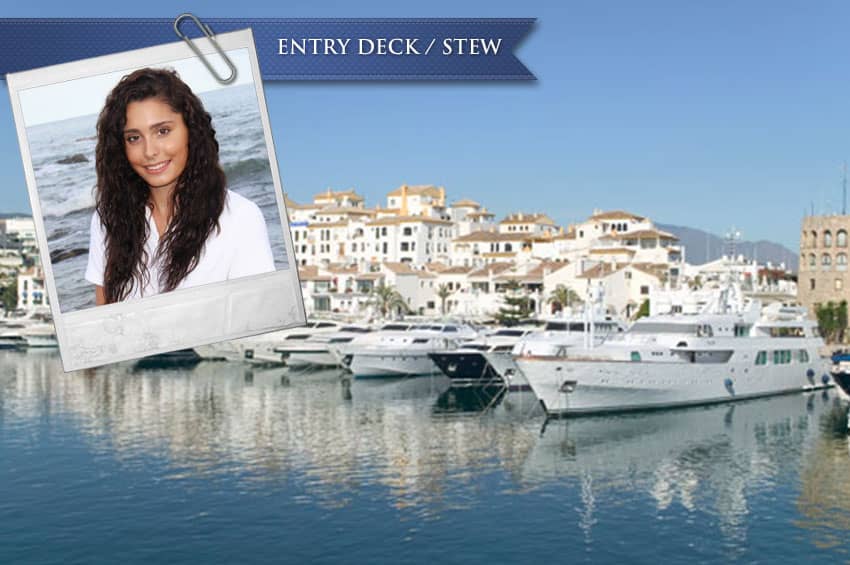
A Day in the Life Of Series - Entry Stewardess
Joining the yachting industry is an exciting and daunting undertaking. In this two part interview we speak with Melanie about why she decided to join the superyacht industry, what her hopes and goals are, and what she has learnt so far as an entry level stewardess.
29 Nov 2017
A Complete Guide to Yacht Types and Sizes
- by yachtman
- August 28, 2023 June 22, 2024

Yachts, symbols of luxury and leisure, provide a stunning escape. From motor yachts to sailing yachts, the world of yachting is both diverse and captivating. Journey with us as we explore the different types and sizes of yachts, uncovering their secrets.
Climb onboard a superyacht , the queen of the seas. These floating palaces boast remarkable dimensions, with amenities such as swimming pools, helipads, and even submarines. Ideal for those seeking indulgence, superyachts are the epitome of yachting excellence.
For a more intimate experience, try a luxury motor yacht . With powerful engines, they let you visit multiple destinations quickly. Enjoy the lap of luxury as you cruise across the sea, appreciating every moment on board these vessels.
Sailing lovers will appreciate classic sailing yachts . Watch their silhouettes gracefully cut through the waves, powered by wind. Feel the passion for sailing, and the freedom, on an adventure akin to ancient seafarers. Uncover your inner explorer while savoring unparalleled serenity.
Catamarans are ideal for sailing with precision and finesse. With twin hulls offering stability and space, catamarans offer great comfort. Enjoy vibrant sunsets to tranquil anchorages, and bliss on water, with these versatile vessels.
For those keen on exploration, expedition yachts are perfect. Built tough and with advanced tech, they are designed for explorations to remote areas. Discover untouched landscapes, encounter wildlife, and make memories in the far-flung corners of the world.
Types of Yachts
Sailboats to mega-yachts – there’s a large choice of yachts. Let’s delve into the types and sizes that meet different needs.
Take a gander at the table below for an overview of yachts:
| Type | Size Range |
|---|---|
| Sailing Yacht | 20-100+ feet |
| Motor Yacht | 35-200+ feet |
| Catamaran | 30-80+ feet |
| Trawler Yacht | 40-100+ feet |
| Expedition Yacht | 70-400+ feet |
| Flybridge Yacht | 50-150+ feet |
| Sports Fisher Yacht | 30-70+ feet |
A guide to yacht anchor types and sizes is vital for understanding the different types and sizes available in the yacht industry. For more information, check out a guide to yacht tenders .
Sailing yachts are graceful and use wind power. Motor yachts are speedy and powered by engines.
Catamarans stand out with their steadiness and roominess – great for a leisurely cruise. Trawler yachts are great for long-distance trips because they’re fuel-efficient and have comfy living areas.
Adventurous souls should check out expedition yachts . Flybridge yachts have an extra deck level for entertainment and relaxation.
Sports fisher yachts are designed for fishing, with special gear and amenities.
Don’t miss out on your dream yacht – find the perfect one and go on amazing sea experiences. Start your journey now!
Sizes of Yachts
Yachts come in plenty of sizes, each with its own unique features and capabilities. To discover the perfect yacht for your needs, let us explore the sizes of yachts via a table showcasing their specifications.
Here’s what the table looks like:
| Size | Length | Capacity | Features |
| Tenders | Up to 30 ft | Up to 10 guests | Short trips and transportation to shore |
| Day Boats | 30-60 ft | Up to 12 guests | Day trips, water sports, and entertaining |
| Cruisers | 60-130 ft | Accommodates 8 Guests | Long journeys and luxury living |
| Superyachts | Over 130 ft | Large groups of guests | Swimming pools, helipads, and decks |
Moreover, take into account that certain yachts have stability systems, others prioritize speed, and some are customized. I once met a yacht owner who wanted a retractable roof! With the help of creative builders, his dream was fulfilled and he got to enjoy a unique experience on the open seas.
Factors to Consider in Choosing the Right Yacht
Making the right yacht choice involves many key points to think about. These include size, type, budget, use and preferences, like amenities . To decide wisely, assess each factor and see how important they are. Here’s a table of the main considerations when choosing a yacht:
| Factors | Description |
|---|---|
| Size | Think about how many guests you’ll have and if you want a larger or smaller yacht. |
| Type | Pick between motor, sail, catamaran or mega yachts based on your cruise plans and activities. |
| Budget | Establish a realistic budget that covers purchase costs, upkeep, crew wages, insurance fees and mooring. |
| Intended Use | Decide if you’ll mostly cruise or if you have special activities in mind like fishing or water sports. |
| Amenities and Features | Figure out what features and amenities are essential for your comfort onboard, such as cabins, entertainment systems, water toys or a jacuzzi. |
In addition, there are unique details you should consider, like if you plan to charter your yacht when not in use, go for a popular model. If privacy is important, choose a yacht with separate crew quarters. So, here are some tips for making the right choice:
- Get expert advice from experienced yacht brokers or naval architects.
- Choose respected brands that hold their value in case you resell.
- Visit boat shows and yacht exhibitions to explore different models and talk to professionals.
By taking all factors into account and following these suggestions, you can find the perfect yacht that fits your needs. Whether for leisure or adventure, the right yacht will give you amazing memories on the sea.
So many options! In this guide, we explore yacht types and sizes, helping you find the perfect vessel. From sailing yachts to motor yachts , each one offers a unique experience. Plus, you can customize your yacht for a truly special journey.
Let me tell you about James . He dreamed of a yacht that matched his adventurous spirit. So, he found a builder who specialized in customization. The result was amazing – a sleek motor yacht with state-of-the-art diving gear, space for fishing equipment, and luxurious comforts. On his customized vessel, James cruised beautiful coastlines and made memories that will last forever.
When you search for your yacht, remember that customization is key. You can have a tranquil sailing experience or a thrilling adventure. Dive into the ocean of possibilities – your imagination is the only limit.
Frequently Asked Questions
FAQ 1: What are the different types of yachts?
There are various types of yachts, including motor yachts, sailing yachts, catamarans, trimarans, superyachts, and expedition yachts. Each type offers unique features and advantages.
FAQ 2: What is the difference between a motor yacht and a sailing yacht?
A motor yacht, as the name suggests, is powered by an engine and offers more speed and convenience. On the other hand, a sailing yacht relies on wind power and provides a traditional sailing experience with a slower pace.
FAQ 3: What is a superyacht?
A superyacht is a luxury yacht with high-end amenities and extravagant features. These yachts often offer spacious cabins, multiple decks, swimming pools, helipads, and other luxurious facilities.
FAQ 4: What is the average size of a yacht?
Yachts can vary greatly in size. The average size of a yacht ranges from 30 to 60 feet. However, larger yachts, known as superyachts, can measure over 100 feet in length.
FAQ 5: What is the advantage of a catamaran or trimaran?
Catamarans and trimarans provide more stability due to their dual or triple hull design. They offer spacious interiors, increased deck space, and enhanced fuel efficiency compared to traditional monohull yachts.
FAQ 6: What is an expedition yacht?
An expedition yacht is designed for long-range cruising and exploring remote destinations. These yachts feature robust construction, advanced navigation systems, and ample storage for supplies and equipment.
Leave a Reply Cancel reply
Your email address will not be published. Required fields are marked *
Save my name, email, and website in this browser for the next time I comment.
- San Lorenzo
- Yacht Rental in Dubai Marina
- Yacht Party Dubai
- Overnight Experience
- Formula 1 Abu Dhabi
- Corporate Events
- Fifa World Cup 2022
- Anniversary Celebrations
Connect with a yacht expert & get per personalised Deals

What Size is a Yacht
Yachts are boats used for leisure and are usually over 30 feet long. They come in different sizes; the more luxurious ones are between 30 and 60 feet, while the really big ones, called superyachts, are over 100 feet. Smaller boats for day trips are not yachts if they are less than 30 feet. Today’s article will discuss yacht sizes, dimensions, and classifications.

Yacht Sizes
| Small Yachts | Up to 40 feet |
| Medium Yachts | 40 to 70 feet |
| Large Yachts | 70 to 100 feet |
| Super Yachts | 100 to 200 feet |
| Mega Yachts | Over 200 feet |
To determine a yacht’s size, start by measuring from the front to the back end, which gives you the overall length. Remember, this measurement, known as length overall (LOA) , includes everything from the main deck to any forward-pointing parts or rear platforms.
The length of the part of the yacht that’s actually in the water is also measured, and it is called waterline length (LWL) . You must consider other dimensions, such as the width (beam) and how deep it sits in the water (draft). Yachts are weighed without any liquids on board to get the dry weight and with all liquids for the wet weight. If you add all the gear, you get the loaded weight. These are one of the characteristics or parameters that mark the difference between yacht and cruise .
Yacht Dimensions
| Sailing Yachts | 30-100 | 8-20 | 10-30 | 0.2-5.9 | 5-150 |
| Motor Yachts | 35-200 | 12-30 | 15-40 | 3-7 | 50-500 |
| Catamarans | 30-60 | 15-30 | 10-35 | 1-5 | 20-120 |
| Trawlers | 40-80 | 15-25 | 10-35 | 3.5 | 30-200 |
| Explorer Yachts | 60-400 | 20-50 | 15-60 | 3.6-5.0 | 200-10000 |
How Do Yacht Sizes Impact Their Handling

Yacht size significantly affects handling. Due to increased length and displacement, larger yachts have more momentum and take longer to respond to steering and power changes. They require more space to maneuver and have larger blind spots, especially under the bows. Smaller yachts are generally more agile and responsive.
Small yachts are easy to handle and quickly change direction, perfect for navigating tight spots. Larger vessels, such as explorer yachts built for long-distance travel, need careful steering and more time to slow down or stop. They often come with extra features like thrusters for precise control.
The yacht’s width, or beam, keeps it steady on the water; however, a wider yacht might not move as swiftly or turn as easily. The draft, which is how deep the yacht goes under the water, is deeper for better performance against the wind, but it means the yacht can’t go into shallow areas. The yacht’s height affects how much wind it can catch, which helps determine how far a yacht can travel and makes it more challenging to handle.
Yacht Classification
| Commercial Yachts | Business, charters | 50-180 ft |
| Private Yachts | Personal use | 40-200 ft |
| Charter Yachts | Rented for vacations | 50-150 ft |
| Luxury Yachts | High-end private use | 70-300 ft |
| Sport Fishing Yachts | Angling, tournaments | 30-100 ft |
When you are looking to charter a yacht, buy one, or rent it for a getaway, picking the right size is essential. It is all about matching the yacht to what you need, whether that’s room for a big group, special features for comfort, or just the right feel.
The size you choose has a big impact on how easy the yacht is to handle, where you can take it, and how many friends or family can come along. In addition, it has got to fit your budget. Getting the size right means you will have a better time on the water and save money.

Choosing the Right Yacht Size – Final Words
In the world of yachting, size does matter. It influences everything from the yacht’s handling and maintenance to the overall onboard experience. Whether you are a seasoned sailor or a leisurely cruiser, understanding the dimensions and classifications of yachts ensures that you select a vessel that meets your needs and delivers the comfort and performance you desire.

Qazi Raza Ul Haq
My name is Raza and I am an experienced SEO content writer who loves to explore and seek adventure. I have over 8 years of experience in blogging and SEO content writing. I would be delighted to take you on a thrilling journey to discover the world of yacht rentals in Dubai, providing you with valuable insights and helpful tips.

PER HOUR Per Day
Browse our Yachts

Yacht Types and Sizes
Which yacht types and sizes exist in the world.
Are you curious which yacht types and sizes exist in the world? Spoiler: there are plenty!
In this article, we explore different types of yachts, such as motor yachts, sailing yachts, catamarans and trimarans.
We talk about their unique features, advantages and disadvantages.
We also cover the difference between serial, semi-custom and custom yachts and see which one is right for you.
Finally, we learn about how yacht size is measured and how it affects overall yacht volume and operations.
Let’s get started!
YACHT TYPES
If you consider buying a yacht, you need to decide on its type.
Which yacht type do you prefer: motor yachts, sailing yachts or catamarans?
These three categories are the most popular types of yachts, although there are also other ones.
Let’s look at each of them separately.
Yacht Types: Motor Yachts
Motor yacht is the most common type of a superyacht. Around 80% of world’s yachts are motor yachts.
These luxury boats are powered by strong engines, do not have sails and over time have become symbol of a classy and laid-back lifestyle.
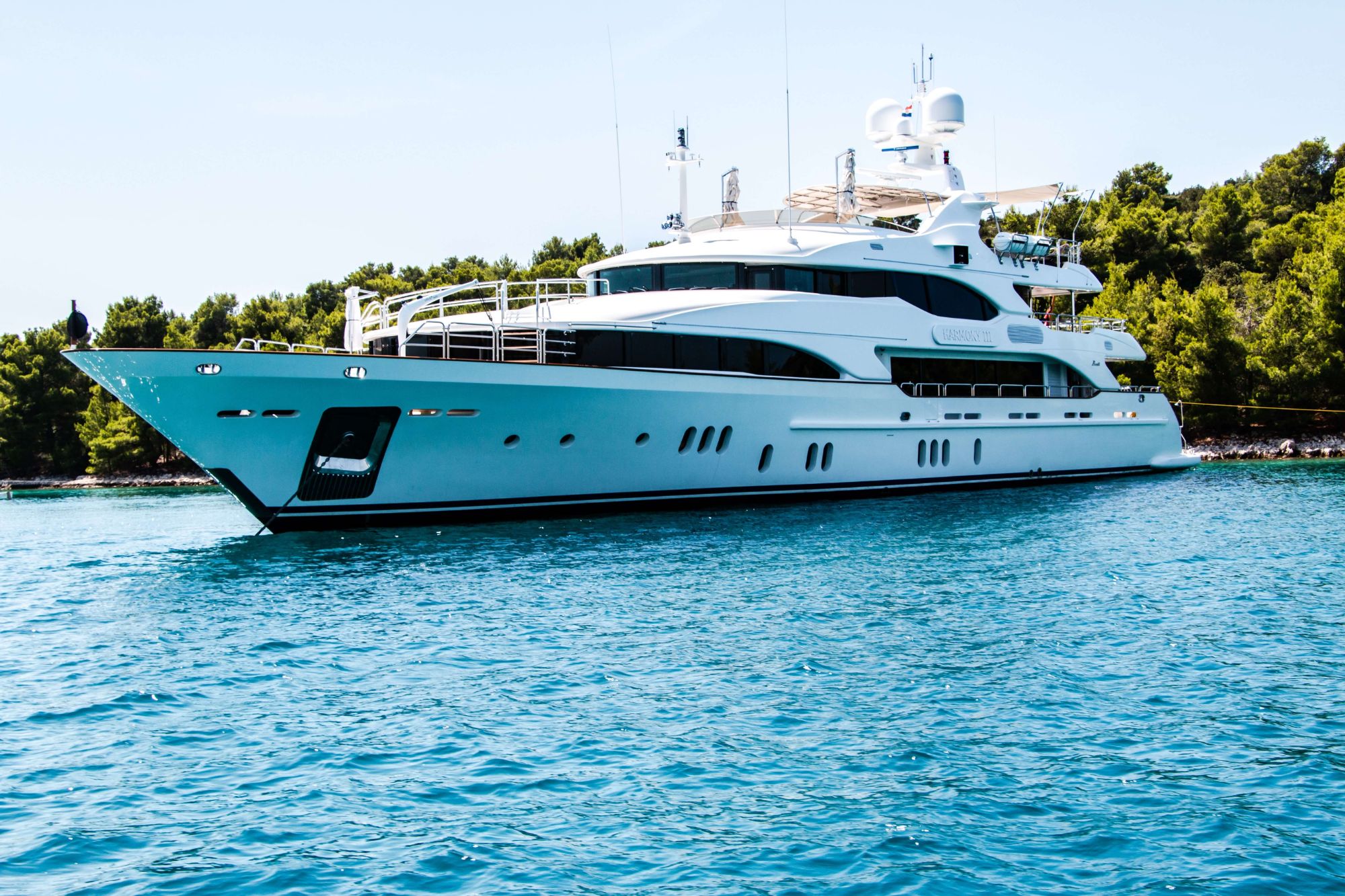
Pros of Motor Yachts:
- Powerful and fast
- Greater technological advances
- Greater deck space, more living volume
- Easier to find suitable crew members
- Easier to operate than a sailing yacht
- Easier to host guests of all personalities
Contras of Motor Yachts:
- Less sustainable, higher fuel consumption
- Less adventurous feel (if you are looking for it)
- Shorter range (can only be powered by motor)
- Engine noise
Motor yacht is probably the first thing which comes to your mind when you think superyachts.
Classy and sleek design, plenty of deck space, comfortable staterooms and lots of entertainment options – all this you can find aboard a motor yacht.
Motor yachts come in different types and sizes and with different purposes. The latest trend is explorer motor yachts, which are explicitly equipped for cruising in cold polar regions.
Yacht Types: Sailing Yachts
Sailing yachts are the second most popular yacht type. If you love the wind and want that classy sporty feel while aboard, then a sailing yacht is the right yacht type for you.
Another advantage is that when not powered by motor, sailing yachts are very quiet. It is only the sound of waves and wind (and an occasional seagull) around you.

Pros of Sailing Yachts:
- Unique feel of adventure
- Can combine peaceful cruise with racing
- Very quiet when powered by sail
- Lower fuel consumption
- Lower maintenance cost
- Can sail in shallower waters
Contras of Sailing Yachts:
- Tend to be slower that motor yachts (in case you like speed)
- Less stabilization
- Smaller cabin space
- Might have less lifestyle equipment available (Jacuzzi, gym, cinema) …
There are only two types of people out there: sailing yacht fans and motor yacht fans. Rivalry between fans of the two yacht types has become legendary.
Probably, you already know which group you belong to. Nevertheless, we still recommend you charter both sailing and motor yachts to be sure you are making the right choice. If you are still unsure, read about the third yacht type below.
Yacht Types: Catamarans
Catamaran is defined as a vessel with two parallel hulls which are joined together. Due to its form, catamaran is the most stable of all yacht types.
If you are looking for stability and comfort, or have family members who easily get seasick, buying a catamaran is a valid option to consider.
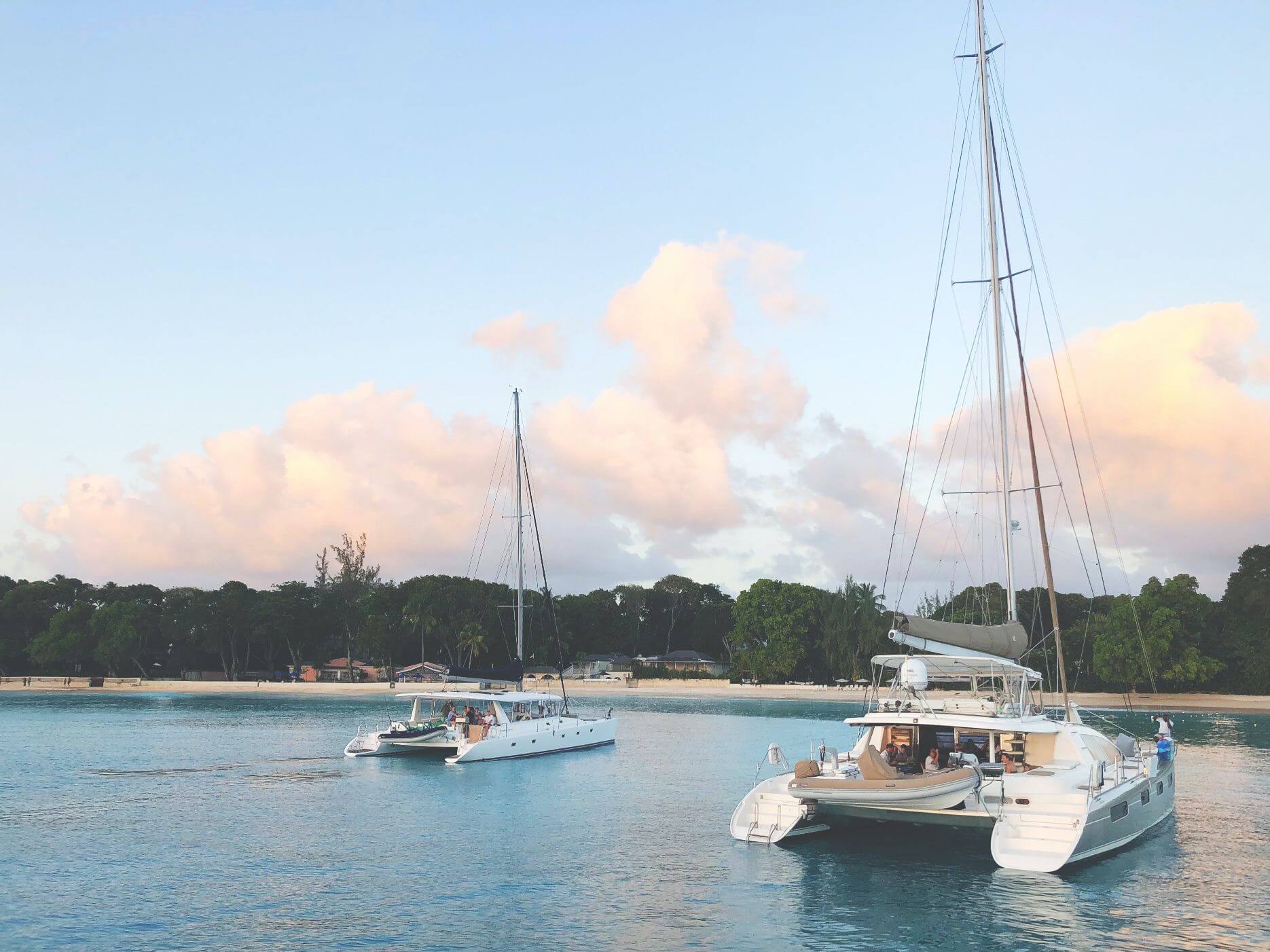
Pros of Catamarans:
- More fuel efficient & sustainable
- More stability
- Can be used in shallow waters
Contras of Catamarans:
- Less volume for staterooms
- Higher dockage rates than for a monohull
- Different sailing feeling compared to a sailing boat
Catamarans offer a great opportunity for taking family vacations, which will leave every family member happy. Since they are more difficult to sink, they are also considered the safest boats.
If you are looking for extra stability, comfort and space, but also do not want to compromise on adventures and possibility to explore shallow waters, catamaran is right yacht type for you.
Yacht Types: Trimarans
Big brother of a catamaran, a trimaran, has even three hulls – one main hull in the center, and two smaller hulls on each side.
You will not see them as often, but there are certainly also big fans of trimarans out there. Trimarans are designed for racing or leisure but are also widely used for military and shipping purposes.
YACHT PRODUCTION TYPES: SERIAL, SEMI -CUSTOM, CUSTOM YACHTS
Now that we’ve covered yacht types, let’s investigate which production options are out there. Unlike the automotive industry where most of the car models come from production lines, the yachting world offers future owners more possibilities.
SERIALS YACHTS
This is the most common and less expensive way to get to your new dream boat. Serial or production yachts are yacht models which are produced by shipyards in various quantities based on model and size.
Serial does not mean that you cannot tune it to your taste though. Manufacturers offer different sets of modifications with certain yacht models. You will likely get to choose between several layout models and different equipment options.
Obviously, if you order a newly build yacht, you are likely to get more space for your improvements, than if you decide to refit an already existing yacht.
SEMI-CUSTOM YACHTS
A good way for owners who wish more character and comfort to their boats but at the same time do not want to order a fully customized vessel, is to order a semi-custom yacht.
Semi-custom yachts stand between serial and fully customized boats. You save a lot of time and effort by picking an existing engineered platform from which to start planning.
Then, together with experienced naval architects and designers, you enhance it up to your expectations by customizing layout (possibly including superstructure) and interiors.
Ordering a semi-custom yacht gives you more freedom to decide how your yacht will look like. Construction time is also much shorter in comparison with a fully customized yacht, since many parts are already designed, engineered and possibly even pre-built.
By ordering a semi-custom yacht, you can shorten construction time from two – three years up to several months!
Shipyards are also less likely to fall behind the delivery schedule, since they have produced similar yachts before and know which time is needed for delivery.
Most semi-custom yachts are designed to suite majority of potential future owners, which means that layout, size, engineering etc will be well thought-through in advance.
Due to extensive previous testing & refining of semi-custom hulls by the shipyard, it is possible that your new yacht will turn out more reliable and problem-free than a fully customized yacht.
CUSTOM YACHTS
If you wish to be unlike anybody else and want to take your dream a step further, a fully custom-built yacht is exactly what you need.
Almost anything is possible and achievable in today’s superyacht building industry. The only considerations are your budget and international safety and security standards, more on which you can read in our article on Safety and Security Onboard Superyachts.
With a custom-made yacht, you can be sure you will get exactly the boat you want, tailored just for your preferences, no other yacht in the world being similar.
Consider longer delivery time and substantially higher cost, since R&D expenses are not shared between yachts of the same series.
Many owners buy a smaller replacement yacht, while they are waiting for their customized dream boat to leave the docks.
A fully customized superyacht is surely the most exclusive type of a yacht one can own.
Yacht Sizes
Now let’s look at different yacht sizes. But first, let’s find out what yacht size actually is.
How is yacht size measured?
Length Overall (LOA) is the most widely used metrics of yacht length. It is measured from the aftmost tip of the hull to the furthermost point of the stem, measured parallel to the waterline. It is probably the only yacht length definition you need to know as an owner.
*For yachting geeks out there, here are other yacht size definitions used in the industry:
Length of Deck (LOD) : deck length excluding bow sprits and other projections. Makes particular sense for sailing boats, since their Length Overall can considerably vary from their Length of Deck.
Length of Hull (LH or LOH): Length of hull including fixed fendering but excluding any bow sprits. It can be shorter than LOA.
Length of Waterline (LWL): length of a boat at the level where the boat sits in the water.
Interesting fact: Did you know that with each additional 1 meter of length, the internal volume of a yacht increases by 6-7 cubic meters? A 40-meter yacht is not just twice longer than its 20-meter companion. According to Cube Law, it is also 6-7 times larger in volume!
Motor yacht sizes by group
Let’s look at different sizes of motor yachts. To make things easier, we divided them into 4 groups.
Please note that the following crew and guest numbers per yacht size are only approximate.
Factual crew numbers will depend on specific yacht length, cruising style, owner preferences and whether the yacht charters or not.
Factual guest numbers will depend on yacht registration type, especially with larger yachts.
22 – 40 meter motor yachts
Motor yachts in of this size are most likely serial production yachts. This means that you can buy a specific yacht model which has been designed before, and choose your own details, such as finishings and furniture.
Yachts of this size will need 4-6 crew members: yacht captain, one or two deckhands, one or two stewardesses, a yacht chef, and presumably an engineer.
22-40 meter long motor yachts normally can host up to 8 guests.
40-60 meter motor yachts
Motor boats of 40 meters length and larger are considered superyachts also within circles of superyacht industry professionals.
This is where operations and crew requirements become considerably more sophisticated. There are also more semi-custom and custom boats in this size segment.
A 40-50 meter motor boat will require a crew of approximately 9-13 crew members, depending on specific owner requirements and cruising / charter preferences.
A possible crew setup would be: yacht captain, first officer, bosun, two engineers, three or two stewardesses, two deckhands, one or two chefs (often a guest and a crew chef).
Crew of a 60 meter motor yacht will count around 20 members.
40-60 meter long motor yachts normally can host up to 12 guests.
60 – 80 meter motor yachts
Here the yachts grow much larger, and so do the costs of maintenance.
A yacht of 60 meters length will have a crew of 20-23 members. A yacht of 80 meters length can have a crew of up to 80 members.
The maximum number of guests will depend on yacht registration type. Many owners choose to keep maximum of 12 guests, since it allows for a simpler regulation regime.
80 – 180 meter motor yachts
A 100 meter motor yacht will require 80-100 members crew. Its tonnage will exceed 500 GT, which means that the yacht will fall under more regulations: STCW, SOLAS, ISSC, ISM and others.
A 170 meter motor yacht can have up to 100 crew members.
The largest yacht worldwide at the time of writing is Azzam, at 180 meters built by Lürssen. Azzam can host 36 guests and a least 80 crew.
Maximum guest number on a yacht of this size can still be only 12 guests. But if the yacht is registered as a passage vessel, it can be significantly more.
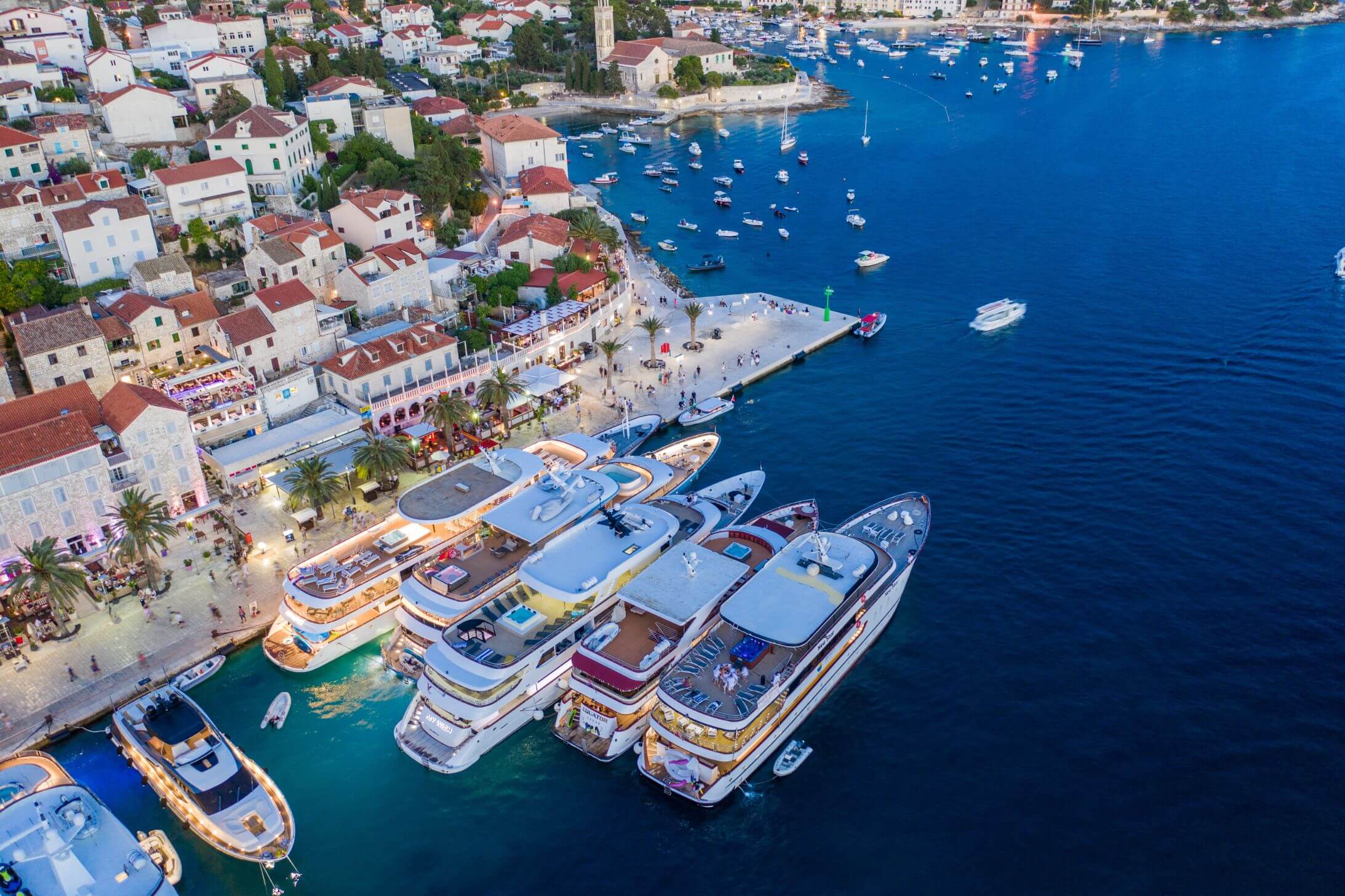
How does yacht size affect my yachting experience?
Size does matter after all.
Let’s look at factors that change with the growing size of a yacht.
While thinking of upgrading to a bigger vessel, do not forget that as the yacht size grows, following factors also increase:
- Yacht price
- Availability and price of marina dockage
- Fuel consumption
- Number of full-time crew members
- Time you can spend away from ports
- Quantity of water and other supplies the yacht can carry
- Functionality and entertainment options
- Complexity of repairs
- Applicability of laws & regulations
- Time needed to sell the yacht
Budget is the main factor which determines how big your boat can be. To learn more about the cost of yacht ownership, read this article.
During the past decade, superyachts increased in size dramatically, and this trend continues. According to an article by Boat International, there has been around 10.000 yachts over 24-meter LOA in the world. Around 80% of them were motor yachts.
Most of the owners start small and upgrade their boats over years. Once you owned a smaller yacht for some time, you will understand exactly what you love about it.
Also, you will know what you want to improve. So why not initiate a new-build of a new more exciting and possibly larger boat? You can still have the older yacht at your disposal, while waiting for the new delivery.
SUMMARY: YACHT TYPES AND SIZES
In this article, we classified all yachts into 3 main types: motor yachts, sailing yachts & catamarans. We also discussed their pros & contras.
We explained the difference between serial production, semi-custom and custom yachts.
Finally, we learned how yacht size is measured and how it affects various aspects of yacht operations. We looked at crew and guest numbers for each yacht size.
Another important factor to consider is whether you want to commission a new-built yacht or buy a second hand one . More on this in our next article .
Drop us an email if you need help with choosing a yacht or booking a yacht charter. We will define your needs and find the best solution together.
Are you a motor yacht, sailing yacht, or catamaran fan?
Comment below!
Article by Olympiada Wohlin-Elkovsky from Yachtowner.co
More Articles
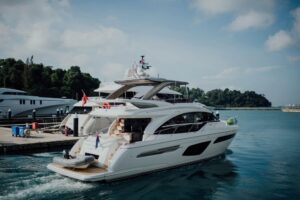
Should I Buy a New or a Used Yacht?

Superyacht Tenders and Toys in 2023

List of Best International Yacht & Boat Shows
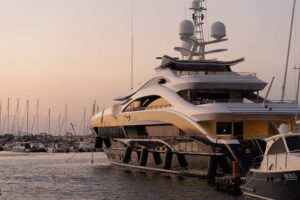
Step by Step Guide to Yacht Charter
Leave a reply cancel reply.
Your email address will not be published. Required fields are marked *
Save my name, email, and website in this browser for the next time I comment.
Yes, add me to your mailing list
Privacy Overview
How Big is a Yacht: The Different Yacht Sizes
Date: 04/27/2021, author: cross chartering.

There are lots of different ways to experience the thrill of the sea depending on your interests, style, and budget. In general, yachts are watercrafts used for pleasure and sport. But there are a few variations to be aware of if you are interested in buying a yacht for the first time, upgrading your current one, or transporting your yacht to another port.
Here’s an overview of the different a yacht sizes available and the various styles that you can have shipped to amazing destinations all around the world.
Standard luxury yachts.
When most people ask, “How big is a yacht?” they have an image in mind of a standard-size luxury yacht. Yachts are typically anywhere between 30 feet and 100 feet long. Standard luxury yachts tend to be under 78 feet long, and any bigger than that gets you into the superyacht and megayacht categories.
Superyachts
A superyacht is longer than 78 feet and rarer to see out on the water. Superyachts usually have full-time crews and come at a higher price point than standard yachts because of their size and all their special perks. You’ll often find water sports equipment and entertainment features on superyachts.
Megayachts are the largest yachts available and at least 160 feet long; however, there is no upper limit on how big these yachts can be. These massive sea vessels are a sign of status among the rich and famous. They are great for big groups and typically run by professional crews. Megayachts usually have three decks with staggered living spaces. Better yet, they’re big enough to have theaters, swimming pools, gyms, spas, and many more luxurious amenities.
Sport and Flybridge Cruisers
Cabin cruises are the smallest types of yachts and usually between 30 feet and 40 feet long. Because of their size, some people don’t even consider them to technically be “yachts” at all. They are sleek and compact, which makes them perfect for day cruising and maneuvering narrower waterways.
Size Considerations and Importance
The length of a yacht is the maximum length overall, which includes any swim deck or bowsprit. You’ll also want to consider the yacht’s dry and wet weight (the difference being whether there are fluids in the tanks), as well as the loaded weight that adds in the equipment you have onboard. Knowing these figures can help you determine a safe travel speed, how much gear you can bring along, and how it can be towed.
Types and Styles of Yachts
In addition to the different yacht sizes, these types of boats can be further broken down into various types and styles. In addition to classic motor yachts, there are also sedan yachts with single-level living quarters, flybridge yachts with an open deck, and daybridge yachts with multiple levels. Sport yachts are used for fishing or water sports, while catamaran yachts have two hulls and can be used in shallow water .
Yachts can be powered by the wind, a motor, or a combination of both. Expedition yachts are powerful vessels and built for extended journeys with plenty of practical features in addition to the luxurious touches. Gulet yachts are a popular choice for pleasure sailing and really beautiful boats that originate from Turkey.
Yacht Transport for All Sizes of Yachts
Regardless of whether your yacht is big, small, old, new, or something in between, Cross Chartering Yacht Transport can assist you with your transportation needs all around the world. We offer yacht logistic solutions for all sizes and types of yachts so that you can set sail to and from wherever your heart desires.
To learn more or to request a quote for yacht transport, please contact us .

Destinations
Cross Chartering Yacht Transport US 8201 Peters Road Plantation, FL 33324 Phone: +1 (954) 686-6902 Email: [email protected]
Cross Chartering Yacht Transport International Napoleonkaai 39 2000 Antwerp, Belgium Phone: +32-475-43-45-31 Email: [email protected]
Copyright ©2023, Cross Chartering Yacht Transport, All Right Reserved

- (954) 633-4878
- [email protected]
Gulfstream news
- February 1, 2024
Yacht Buying: How to Choose the Right Length and Size

Finding the right yacht is akin to discovering a personal oasis. As you embark on this exciting venture, a multitude of factors come into play. The length and size of the yacht are paramount considerations, for they affect everything from comfort and usability to maintenance and docking. Through tailored insights and mastery in the marine sphere, this guide aims to navigate you toward making an informed decision in selecting the yacht that fits not just your berth but your aspirations as well.
Understanding the Significance of Yacht Size
Yachts come in a variety of sizes, each offering unique opportunities and considerations. The size of your yacht will influence where you can travel, the number of guests you can host, and the overall experience at sea. Larger yachts offer spacious decks, luxurious amenities, and the capacity to traverse oceans, whereas smaller yachts provide intimacy, ease of maneuverability, and access to secluded marinas.
- Flexibility and Freedom : Smaller yachts offer ease of navigation and a personal touch to sailing.
- Space and Comfort : Larger yachts boast expansive living spaces, providing ample room for entertainment and relaxation.
- Journey Length : Consider the distance you plan to travel. Longer voyages typically necessitate larger yachts for added comfort and safety.
Selecting the Right Length for Purpose and Pleasure
Deliberating on the yacht’s length is more than a numerical assessment – it’s about matching it to your maritime dreams. Whether it’s island hopping or open-water expeditions, the yacht’s length dictates your voyaging capacity.
- Adventure Ready : A yacht between 30 to 40 feet is ideal for the daring spirit seeking intimate sea explorations.
- Family and Friends : Yachts ranging from 40 to 60 feet offer the balance of comfort and manageability, perfect for familial excursions.
- Ultimate Indulgence : Going beyond 60 feet transports you into a realm of custom luxury, complete with crews and personalized spaces.
The Influence of Yacht Size on Maintenance and Upkeep
Larger vessels necessitate a higher level of upkeep. Before finalizing your choice, consider the implications of size on the maintenance scope. Will you have the time, resources, and crew needed to maintain the yacht’s condition and performance?

- Docking Demands : Larger yachts often call for specialized marina services and docking strategies.
- Crew Requirements : As sizes increase, so does the need for a professional crew to handle operations and maintenance.
- Scheduled Care : Regular maintenance ensures the yacht remains in prime condition, regardless of size.
Lifestyle Considerations and Size Compatibility
Envision how your yacht integrates with your lifestyle. The size should complement how you plan to use the yacht, whether it’s for weekend getaways, corporate entertaining, or prolonged seafaring adventures.
- Entertaining Needs : An expansive deck and multiple social areas are necessary for those who love to entertain.
- Privacy Preferences : Opt for layouts that provide privacy if you wish to retreat from the world.
- Sporting Provisions : For the active seafarer, storage for water sports equipment and diving gear is a must.
Customization and Personal Expression
Yachts are not just vessels; they are canvases for personal expression. Select a yacht that can be tailored to reflect your taste, whether through interior design, technological upgrades, or performance modifications.
- Interior Design : Seek out yachts that allow for custom interiors to match your aesthetic desires.
- Tech Upgrades : The right size enables the integration of cutting-edge technology for navigation and entertainment.
- Performance Tweaks : Choose a yacht that can be modified for better performance to suit your seafaring style.
Charting Your Course with Expert Guidance
Embarking on the journey to select the perfect yacht is an exhilarating adventure that demands thoughtful consideration. By evaluating your needs, lifestyle, and long-term aspirations, you can zero in on the yacht that not only meets your desires but elevates your experience at sea. When you’re ready to turn your nautical dreams into reality, remember that Fly Yachts has been artfully steering clients towards their ideal maritime match. Whether your horizon holds the promise of tranquil bays or the allure of the vast ocean, talk to a Fly Yacht team member today and discover how our legacy in luxury yachting can anchor your seafaring pursuits in excellence and sophistication.

Thinking of buying a yacht or selling one you already own? Fly Yachts has a wide range listed on their Yachts for Sale page. For an overview of what they offer, drop by the Homepage . More about their expertise and exceptional approach to yachting is available on the About Us page. If you’re interested in having a yacht built just for you, begin your journey on the Build a Yacht page. Opting to rent instead? You can book a luxurious yacht for your next vacation with Yachts Charter and pick from a list of beautiful destinations on the Charter Destinations page. When it’s time to sell, get all the insights you need on the Sell Your Yacht page. And if you’re into both yachts and planes, the Aircraft for Sale page might also catch your interest. Keep up with boating news by reading Gulfstream News , and for any questions or to request help, simply reach out through the Contact page to connect with Fly Yachts.
About FLY Yachts
Recent posts.

Keeping Cool: Understanding Yacht Air Conditioning Systems
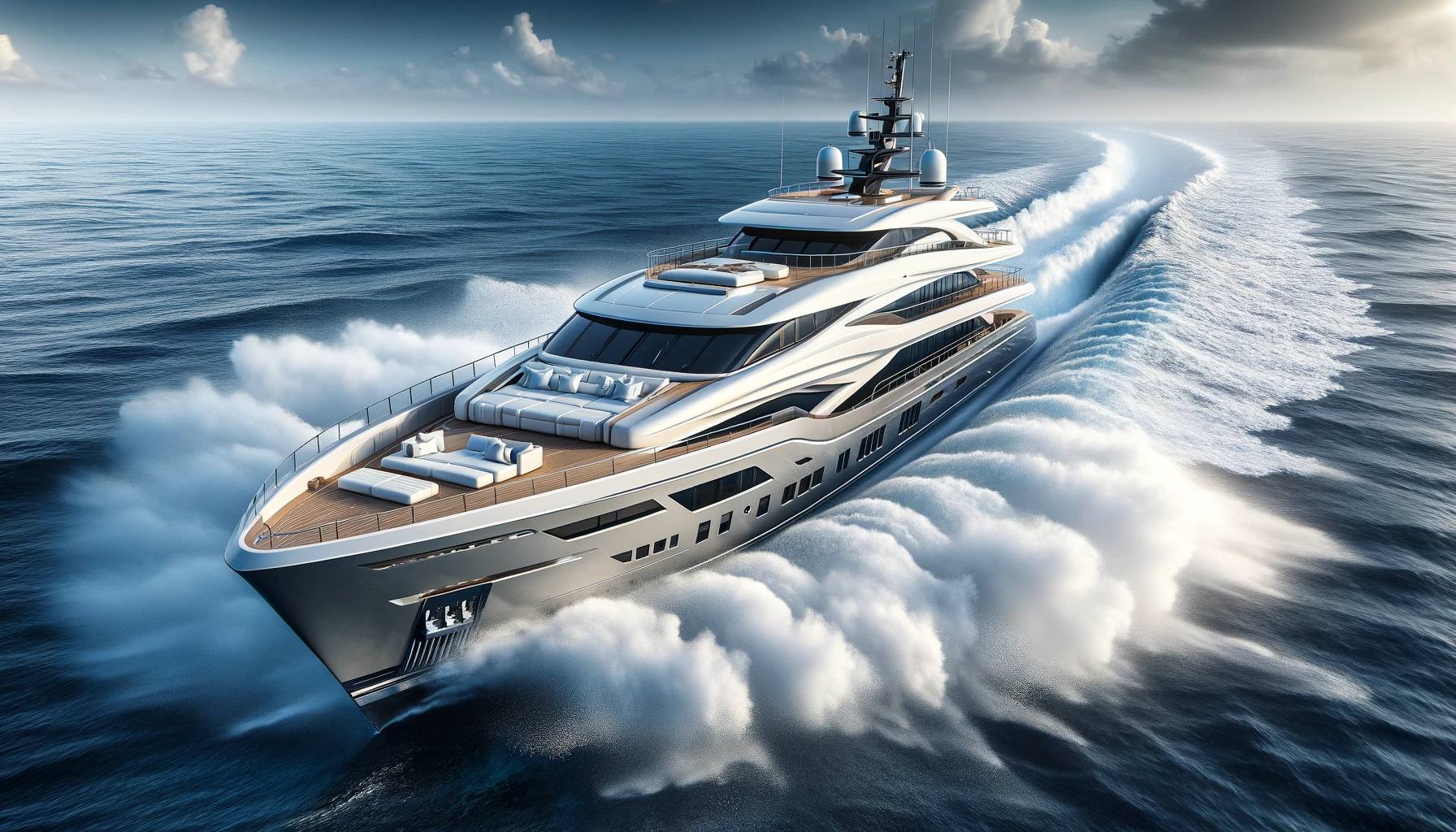
Tech Trends: The Latest Marine Electronics for Yachts
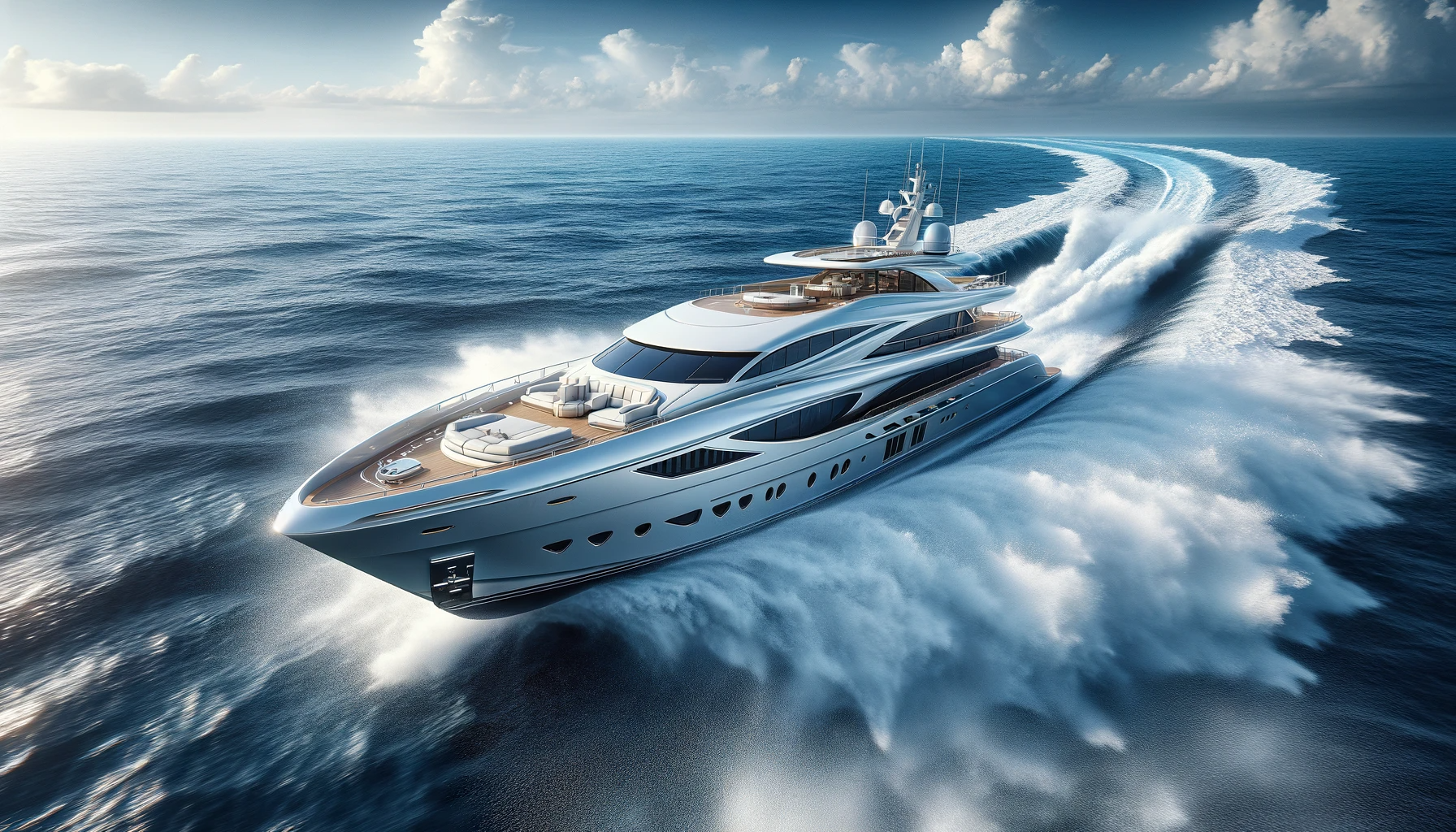
Sailing with the Wind: Insights into Yacht Sail Systems

At What Size Is a Boat Considered a Yacht? (Does Size Matter)
As a yacht enthusiast, it can be exciting to explore the numerous options available to you. Size does matter, but it is equally essential to consider the yacht's ability to entertain and its overall design. Ultimately, the perfect yacht for you is one that meets your personal preferences, budget, and unique needs, ensuring a memorable and enjoyable experience on the water.
In essence, a boat is typically considered a yacht when it reaches over 40 feet in length. However, size alone does not guarantee that a boat will be classified as a yacht. There are other factors at play, such as purpose, design, and the manufacturer's intention.
There is no specific cutoff size that distinguishes boats from yachts. Typically, a yacht is a private pleasure ship at least 40 feet long, while others consider boats over 80 feet to be yachts. It's also important to note that luxury and custom designs often separate yachts from standard boats. Let's examine these features below.
- The term boat commonly refers to smaller vessels or those under 40 feet.
- Yachts are generally 40 or 80 feet, depending on who you ask.
- There are various classifications of yachts, such as mega-yachts and super-yachts for those above 200 feet in length.
- Yachts are primarily designed for pleasure, recreation, and socializing, so size plays a key role in offering more advanced features, comfort, and space to accommodate groups.
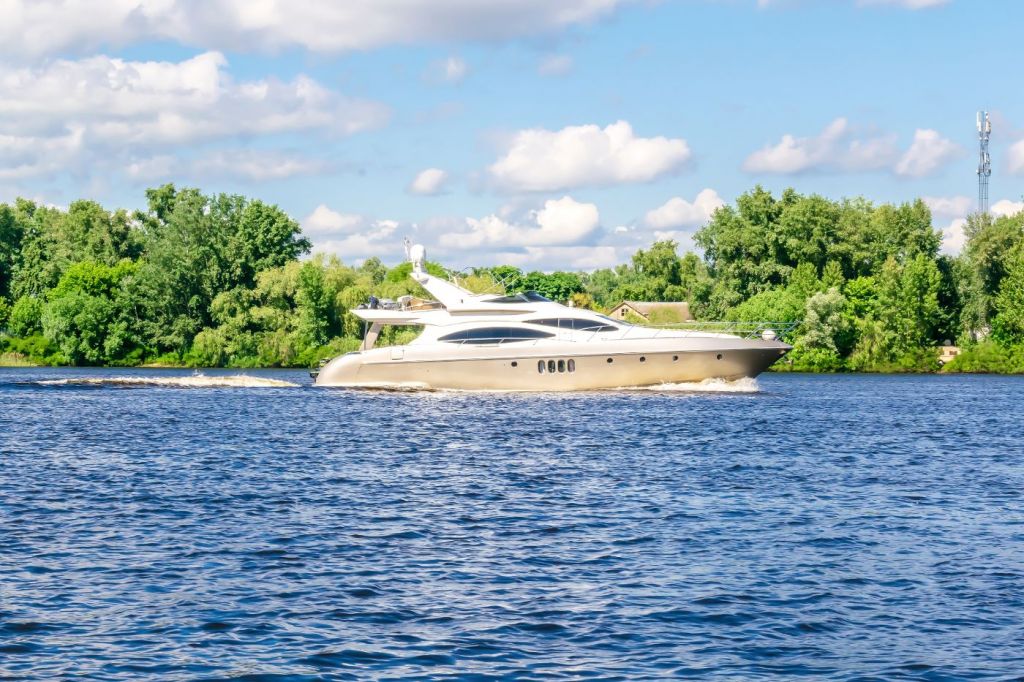
On this page:
Defining a boat and a yacht, does size matter in classifying a yacht, the impact of length on yacht classification, other factors influencing yacht classification.
A boat is a general term for various seafaring vessels, ranging from smaller personal watercraft to larger passenger crafts. Boats can be found in numerous shapes, sizes, and purposes, from fishing boats to speedboats. While there is no strict rule about the category a boat falls into, the term " boat " is commonly reserved for smaller vessels.
On the other hand, a yacht is considered a private pleasure ship, usually associated with luxury and leisure. Size is the most crucial factor when differentiating a boat from a yacht. Yachts are generally 40 feet or longer, although many people consider a boat to be a yacht when it reaches 80 feet in length. This distinction can vary between individuals and organizations, but it is widely accepted that yachts are larger than boats .
Though size is the primary factor in defining a yacht, other aspects play a role, including the vessel's purpose, design, and luxury amenities. The term " yacht " often implies a certain level of opulence, suggesting not just a boat for recreational purposes but also a symbol of status and wealth.
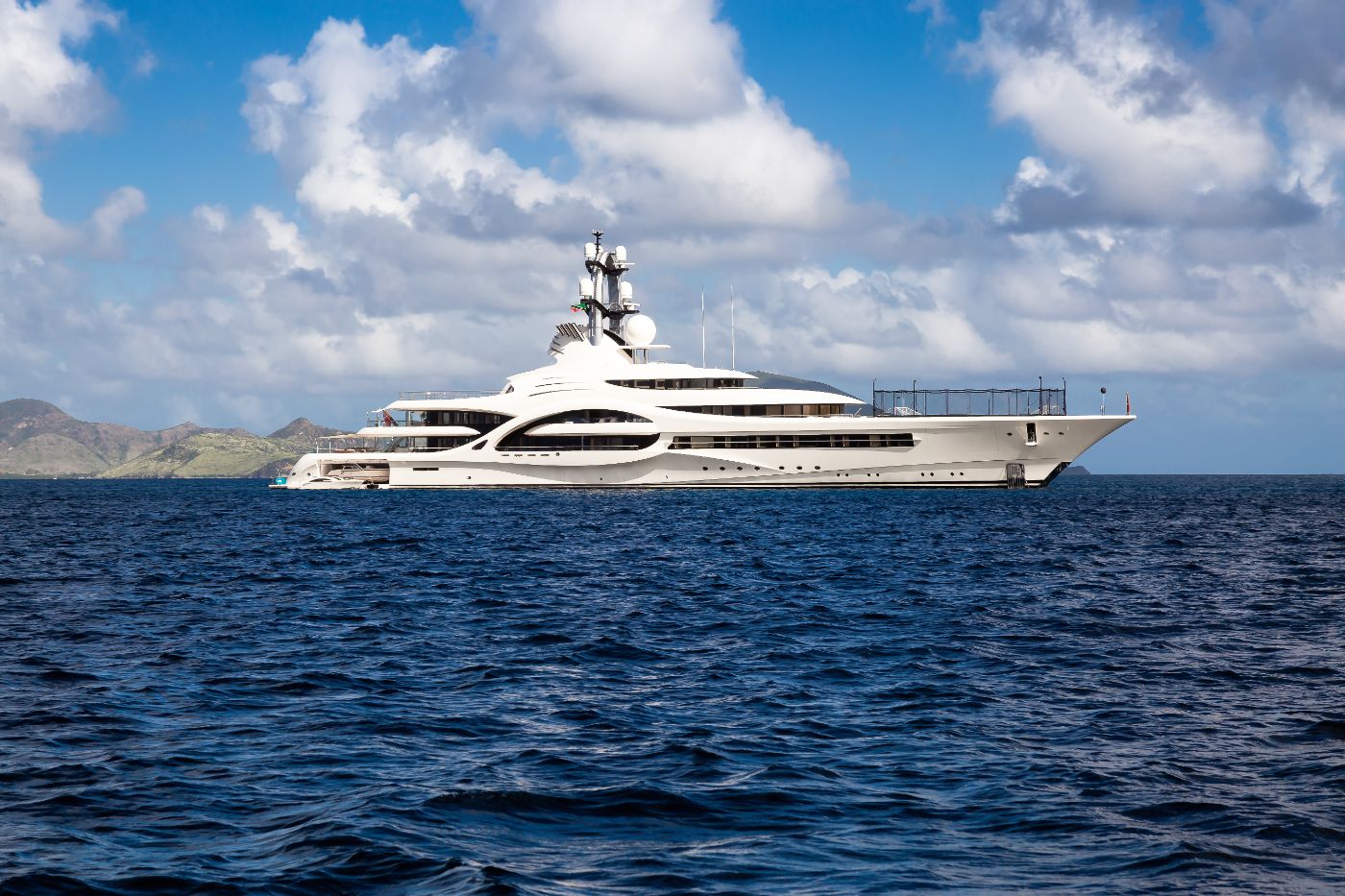
When you think about yachts, you might imagine luxurious and enormous vessels with elegant features. But, does size really matter when it comes to classifying a boat as a yacht? Let's explore this question.
The maritime definition of a yacht states that it should be a private pleasure ship of at least 33 feet in length. However, it's more common to consider boats in the 35–40 foot range as yachts. This suggests that size indeed plays a critical role in classifying a vessel as a yacht. Below are some examples:
Under 40 feet : If your vessel is less than 40 feet, it's more likely to be classified as a boat rather than a yacht. The distinction usually becomes clear at around 33 feet, with yachts typically starting at this length.
40–100 feet : This range represents the sweet spot at which your vessel would undoubtedly be considered a yacht . As your boat approaches 100 feet, it might even start to qualify as a medium yacht.
Over 100 feet : Once your vessel exceeds 100 feet in length, it officially enters the territory of large yachts . These luxurious vessels are designed for extended periods of time on the water and often come with a full crew to cater to your every need.
If you're wondering what yacht size requires a crew , here's our article to answer that.
Here are a few examples of individuals and organizations that have a clear size point of what they consider a yacht. However, it's worth noting that there is no universal definition of what constitutes a yacht, and the specific size ranges can vary depending on who you ask.
The International Yacht Brokers Association (IYBA) defines a yacht as any watercraft over 40 feet in length.
The United States Coast Guard (USCG) defines a yacht as any pleasure vessel over 26 feet in length.
The European Union (EU) defines a yacht as any pleasure vessel over 24 meters (approximately 78 feet) in length.
The Monaco Yacht Show, one of the world's largest yacht shows, defines a yacht as any vessel over 30 meters (approximately 98 feet) in length.
The Superyacht Builders Association (SYBAss) defines a superyacht as any vessel over 24 meters (approximately 78 feet) in length.
The International Superyacht Society (ISS) defines a megayacht as any vessel over 50 meters (approximately 164 feet) in length.
In this section, we'll explore the different classifications of yachts based on their length. When it comes to yacht sizes, there are a wide range of options to meet your preferences and needs. We'll discuss the various features and characteristics you can expect from yachts in each category.
Small yachts (under 80 feet)
These yachts are perfect for day trips, weekend getaways, and shorter excursions. They may have basic amenities, such as small cabins and limited storage space, and are more affordable and easier to maneuver compared to larger yachts. Some popular types include sailboats, speed boats, and cabin cruisers. Generally, these watercraft are considered boats rather than yachts due to their size, but they can still offer a great time on the water.
Are you thinking of buying a yacht? Here's the real cost of a 50-foot yacht .
Medium yachts (80–100 feet)
This size range is where the term "yacht" comes into play, as boats over 80 feet in length are typically considered yachts. These yachts provide more space and amenities than small yachts, making them suitable for multi-day trips and accommodating more passengers. They may have larger cabins, full kitchens, and more luxurious amenities, making them suitable for longer cruises and accommodating more passengers. Examples include sport fishing vessels, sailing yachts, and motor yachts.
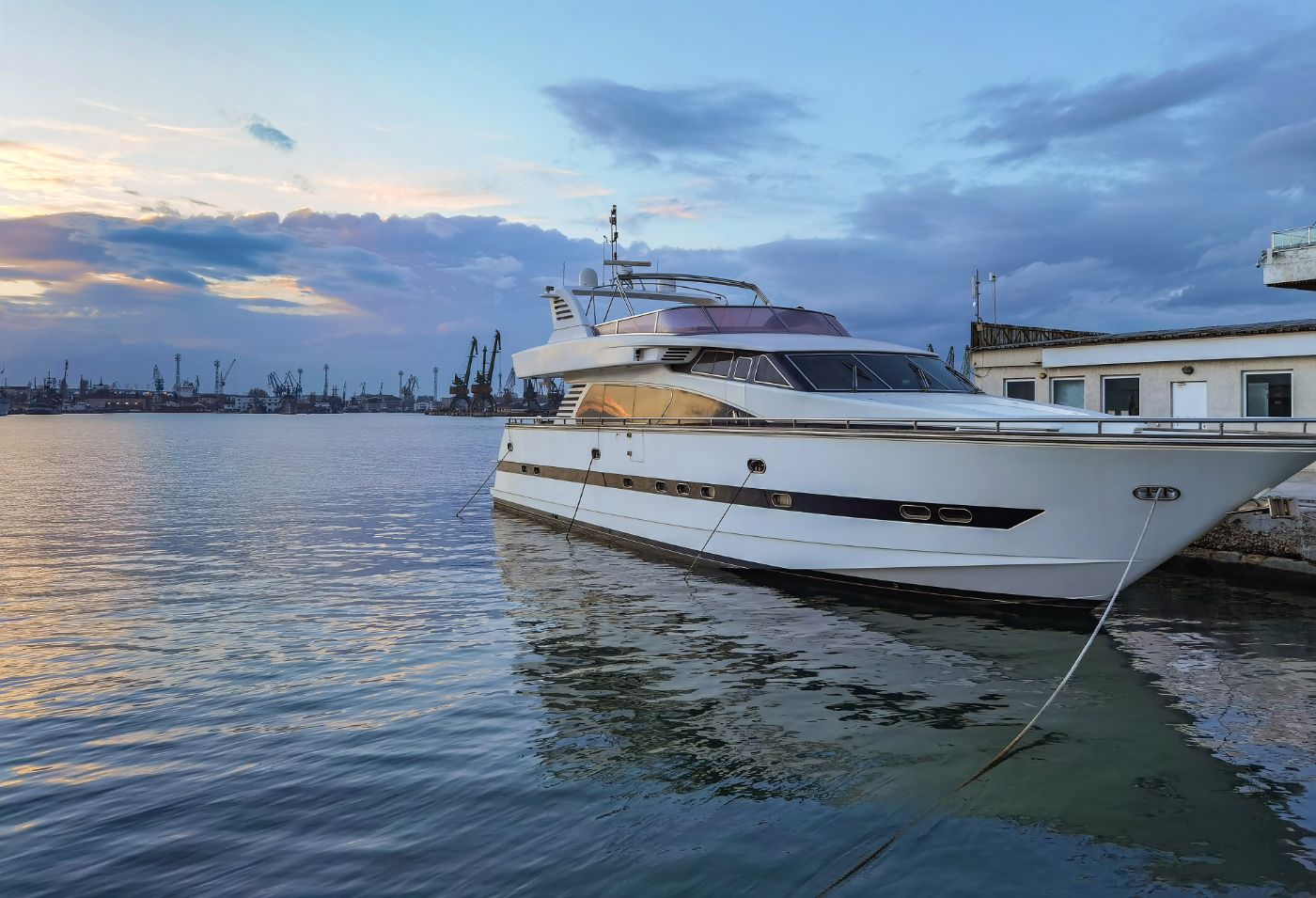
Large Yachts (100–200 feet)
Offering even more luxury and space, large yachts can accommodate numerous guests and host lavish events. With expansive living areas, multiple decks, and high-end amenities, these yachts are ideal for extended vacations or entertaining in style. Owners of yachts this size might opt for custom designs, full-time staff, and cutting-edge technology for added convenience and luxury.
Superyachts (200–300 feet)
At this size, yachts boast unrivaled opulence and grandeur, often featuring amenities like swimming pools, gyms, movie theaters, and helipads. Superyachts usually have a variety of water toys, such as jet skis, water skis, kayaks, and paddleboards, as well as tenders for shore excursions. These vessels typically require a professional crew and are designed for the ultimate luxury experience, accommodating extended stays and far-reaching destinations.
Have you ever wondered how long it takes to build a yacht ? Here's our article on the process.
Megayachts (300–500 feet)
They offer unparalleled luxury, craftsmanship, and performance, with multiple decks and ample living space to accommodate a large number of passengers and crew members. Megayachts are equipped with advanced navigation and communication systems, as well as high-speed internet and entertainment systems. Many megayachts are custom-designed to meet the owner's specific preferences and needs, with unique features and finishes.
Gigayachts (over 500 feet)
The world of gigayachts awaits; these behemoths of the sea are reserved for the elite few who can afford them. They represent the pinnacle of engineering, design, and opulence. With lengths over 500 feet, gigayachts are capable of hosting more than 100 guests and crew members. They often feature amenities such as multiple dining rooms, gyms, spas, and theaters. In this league, the sky's the limit when it comes to onboard experiences and extravagance.
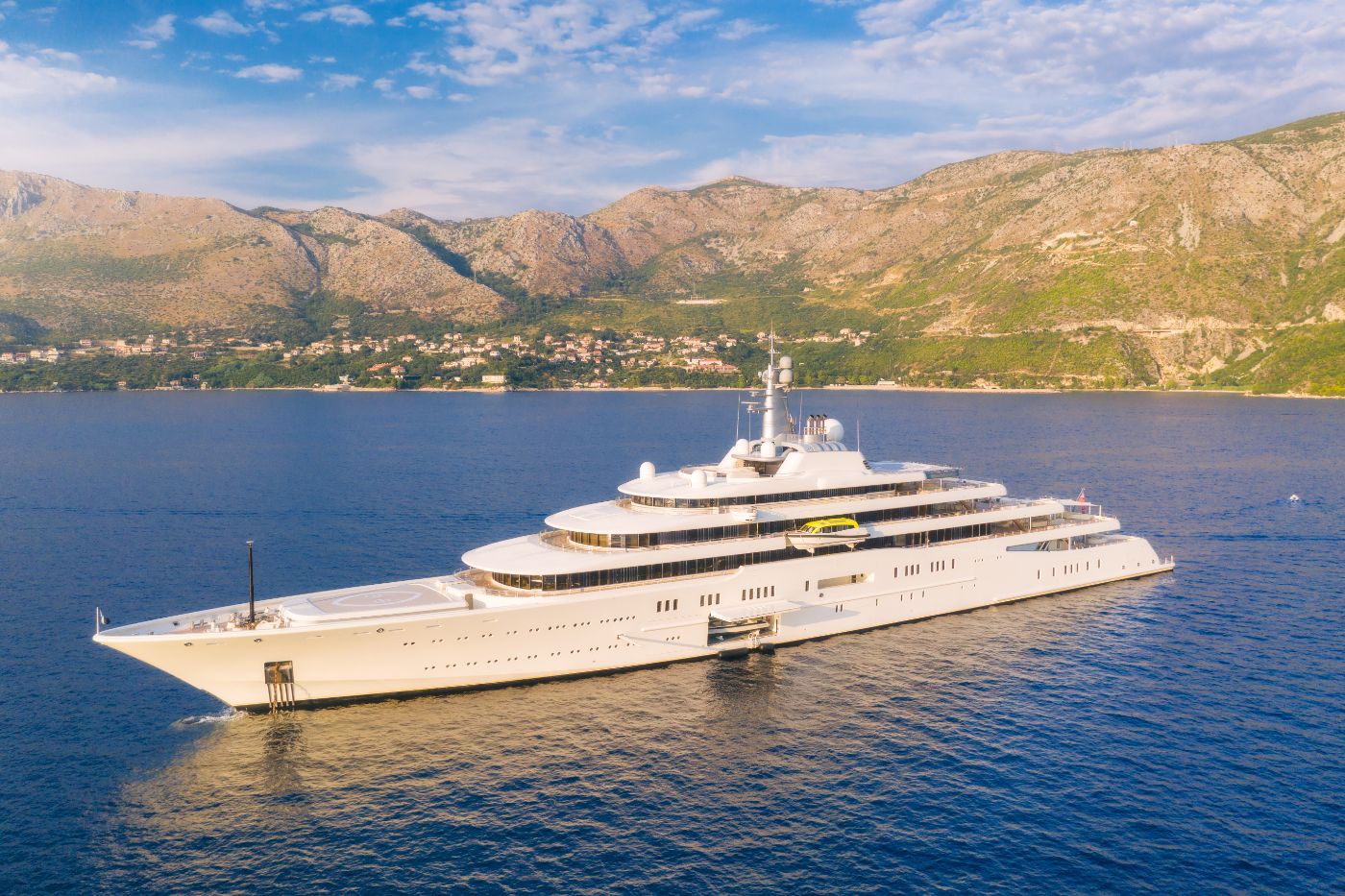
Besides size, there are additional factors that influence a boat's classification as a yacht. In this section, we'll explore these aspects, including amenities, construction quality, and price range.

Amenities in a yacht
When defining a yacht, the amenities it offers can be just as important as its size. A yacht typically provides luxurious features you won't find on an ordinary boat, such as high-end decor, spacious living areas, and state-of-the-art technology . As you explore various vessels, take note of the amenities they provide, such as gourmet kitchens, spa-like bathrooms, and lavish owner's suites . These features contribute to a boat's classification as a yacht, making the experience truly luxurious and comfortable for you and your guests.
Construction quality of a yacht
Another factor that can distinguish a yacht from a regular boat is its construction quality. Yachts are typically built using advanced materials and superior craftsmanship , ensuring the vessel's longevity and performance. As you examine potential yachts, pay attention to the materials used, the hull design, and the engineering behind the vessel.
High-quality yachts are often built by renowned shipyards and feature exceptional engineering by well-known designers. This ensures your yacht not only looks fantastic, but performs just as well on the water.
Price range
Finally, the price range of a boat can be an indicator of whether it should be considered a yacht. Yachts generally fall within a higher price range compared to ordinary boats, due in part to their size, amenities, and construction quality. As you narrow down your options, remember that a higher price tag can signify a greater level of luxury and sophistication, which can help determine if a boat is truly a yacht.
Do you plan to buy a small yacht? Here's the cost of buying and owning one . Keep in mind, though, that the price of a yacht can vary depending on various factors, such as age, brand, and customization options. So, don't rely solely on the price to guide your decision when choosing the perfect yacht for you.
Leave a comment
You may also like, what size yacht requires a crew (for different lengths).
While smaller yachts can be operated by a single person, larger yachts require a trained crew to operate them safely. Different types of yachts also have different …
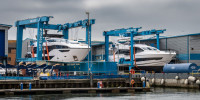
How Long Does It Take to Build a Yacht? (7 Types)
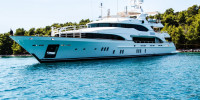
The Real Cost of Buying & Owning a 50-Foot Yacht
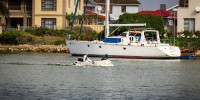
Cost of Buying & Owning a Small Yacht (Detailed Breakdown)
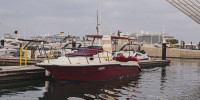
Average Cost of Buying & Owning a Yacht in Dubai (2023)

Boating Basics Online is reader-supported. When you buy via our links, we may earn a commission at no cost to you. Learn more
How Are Boats Measured? (Length, Width & Height)
Written by J. Harvey / Fact checked by S. Numbers
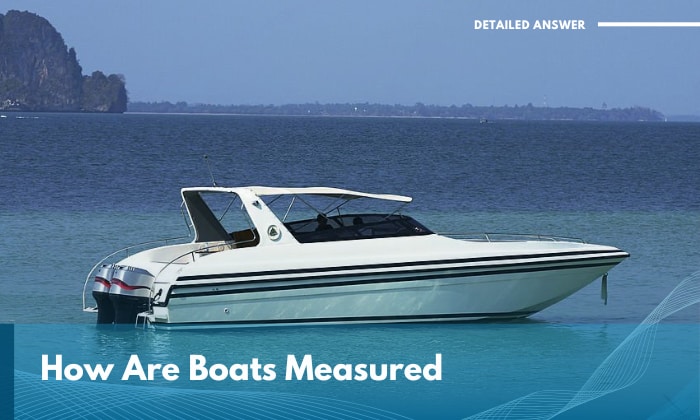
The length of a boat will always be one of its most important aspects because it overlaps numerous essential factors every time you take it out to sea.
As far as the question “How are boats measured?” is concerned, we don’t depart from the fundamentals like knowing its exact length, width, and height.
The significance of knowing the exact boat length measurement is proven by the need to know the vessel’s length overall, length on deck, and waterline length, to cite a few. These are often tallied in order to adhere to regulations and other important considerations.
Read on to find more about the correct way to measure a boat.
Table of Contents
The Different Ways Boats Are Measured
1. overall length, 2. length on deck, 3. waterline length, why are the measurements of a boat important, what device is used to measure a boat.
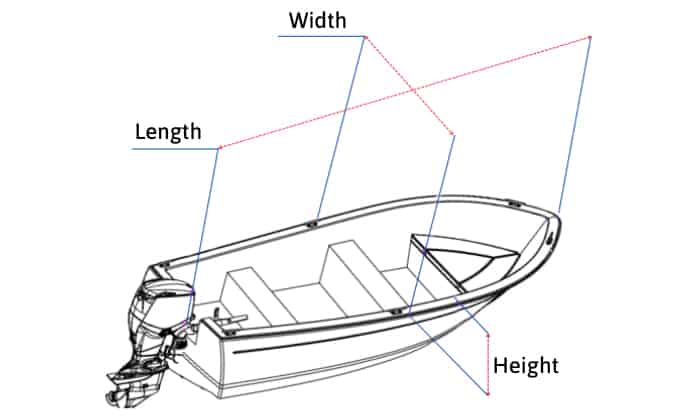
To know how to measure a boat thoroughly, we have to look at both the units that need to be measured and the ways to calculate and quantify them. These are the main parameters you have to look at:
- Length – This unit often takes the spotlight because it includes critical elements such as length overall, length on deck, and waterline length. It’s also what helps to determine boat classifications.
- Width – To measure the width of a boat is to know its beam, which is its upper surface’s widest extent. The average width of a boat is 8 fee
- Height – This is concerned with the distance between the beam’s highest point up to the bottom-most portion of the hull. It could also refer to the freeboard or the distance between the deck and the waterline.
Height (what builders refer to when they measure the depth of a boat) also determines draft (the distance between the waterline and the bottom of the vessel). To elaborate, the taller the boat, the more draft it’ll require to run smoothly.
Length is the more prominent of the three, though. After all, an operator measure the length of their vessel to get vital measurements such as the following:
- Length Overall (LOA) – Most state laws require knowledge of this exact parameter not only to identify the vessel’s true size but also the amount of boating and safety equipment it needs to have onboard. It also influences the vessel’s performance and speed , among others.
- Length on Deck – This is often confused with the length overall (LOA). However, usually, this only accounts for the (you guessed it!) deck’s length and leaves out the protrusions.
It can also be used to approximate boat dimensions and, thus, its total size, though.
- Waterline Length (LWL) – This refers to the vessel’s length with regard to its current waterline. As such, it accounts for the submerged portion of the hull only, so LWL will typically be shorter than LOA.
How to Measure the Length of a Boat
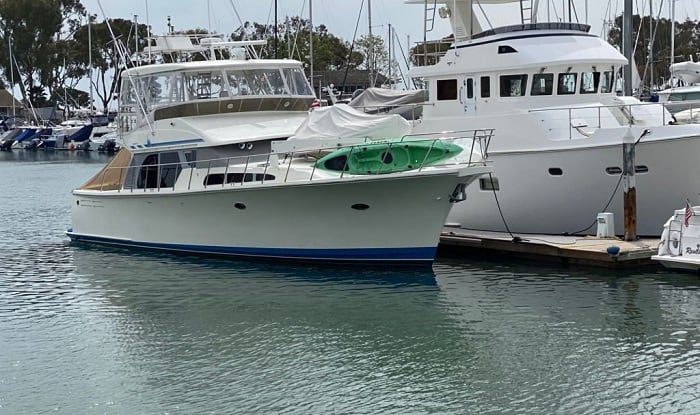
Most shipwrights and boat owners will measure the length of a boat using something as simple as a tape measure. Of course, you’ll need to be specific about the exact length parameter you’re trying to pinpoint.
Are you trying to measure the overall length or the waterline length? Follow these guidelines to learn how are boat length measured:
Normally, the LOA includes all the protrusions. You can start from the bow’s tip and end at the stern’s furthest point. Keep the tape straight and taut while taking the measurement!
At best, how we measure it readily reveals the exact length overall definition. Basically, it’s the vessel’s “true length,” as it includes everything attached to it.
Measure only the length of the deck minus protrusions.
Measure from bow to stern as well, but keep only the submerged portion of the hull in mind. You can usually rely on the grime build-up from the dirty water to measure the waterline length.
However, if there is no impurity mark on the boat, you’ll have to use a pen to mark every 1 foot or so on the vessel when it’s docked. Once it’s back on land, you can use a tape measure to size it.
Incidentally, do you know what unit would be best for measuring a boat’s length? Well, if you look at standard boat listings, they often tell the vessel’s size outright using feet.
It’s really a matter of feet being a simpler unit of measurement than most, plus the fact that it has been an ongoing tradition set by the British.
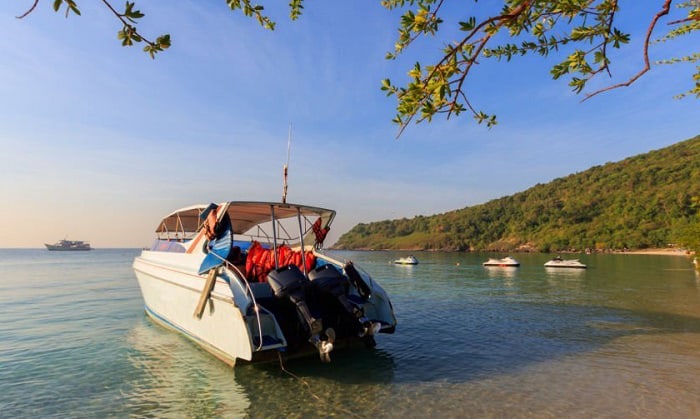
Overall, length plays more of a central role because of the following facts:
- There’s no better way to be familiar with average boat size and the exact size of your own vessel than taking these measurements. You’ll be able to figure out its legal size and know the exact safety and operation regulations you need to be mindful of before going out to sea or lake.
- You’ll have a good idea of its exact capacity in terms of payload, passengers, and cargo.
- You’ll be able to know its strengths and weaknesses performance-wise more intimately. Waterline measurements have been the standard gauge for determining racing performance, for example.
- You’ll be able to know the exact storage requirements for your boat.
- Overall, in order to operate and sell it legally, you need to know a vessel’s exact dimensions.
- Insurance companies need to determine how large or small your vessel is to know its exact premium.
- You need to know how many crew you need to bring along at the minimum.
- Taking the exact boat height measurement as well as length and width allows builders and owners to make the necessary improvements. For example, did you know that small fishing boats in Japan have had their hulls measured to make them more efficient?
- How will you be able to know the exact cover for your boat if you don’t know how long it is? Boat covers need to be a snug fit, but not overly so, to avoid potential problems.
What about swim platforms?
If you’re trying to measure the exact length overall of your vessel, you need to include accessories like swim platforms in your boat measurements.
However, if you’re only trying to find out something specific such as length on deck or taking waterline measurements, you can leave them out.
As I’ve said above, feel free to use a tape measure you have on hand. You can also use telemeters, assuming you’ve got them, to measure a boat length.
Most owners who measure both their boat and its trailer rely on a tape measure, protractors, and a trailer measurement form for noting down the dimensions, usually handed out by the trailer manufacturer.
I hope that by finding out exactly how are boats measured, you’ve come to the same conclusion that it’s a fairly straightforward process. The facts above also outline and underline the reasons why people measure these vessels.
Thankfully, it’s not as complicated as, say, measuring boat chemistry. All I’m going to say is that you shouldn’t overlook these dimensions, especially if you want to get the most out of your boat, not only when you’re operating it but presenting it to potential buyers.
Read more : Tips to measure a boat steering cable.

“My intention from the first day establishing Boating Basics Online is to provide as much help as possible for boaters who want to experience a first safe and convenient trip. So feel free to join us and share your beautiful journeys to the sea!”

The Most Exclusive Summer Destinations in Italy

How to Utilise the UK Public Holidays?

10 Reasons Why You Need to Experience the Atlas Mountain Trekking

Visiting Shillong And Guwahati In May: A Trip I Won’t Regret

How AI Enhances Dining for Global Travelers

Things To Do In Puerto Vallarta: The Naturally Priviledged Area In Mexico
Sorry, but nothing matched your search " ". Please try again with some different keywords.
A Beginner’s Guide To Understanding Yacht Types And Sizes
Feb 13, 2023
Travel Guides
When it comes to buying a yacht, there are many different factors to consider.
One of the most important is understanding the various types and sizes of yachts available on the market. With so many options to choose from, it can be overwhelming for a first-time yacht buyer.
This beginner’s guide will help you understand the different types of yachts and their sizes, so you can make an informed decision when buying your first yacht .
Before we dive into the different types and sizes of yachts, it’s important to have a good understanding of what is available on the market. To get started, check out a list of yachts for sale in various locations . This will give you an idea of the types of yachts that are available and their prices.
Yacht Types
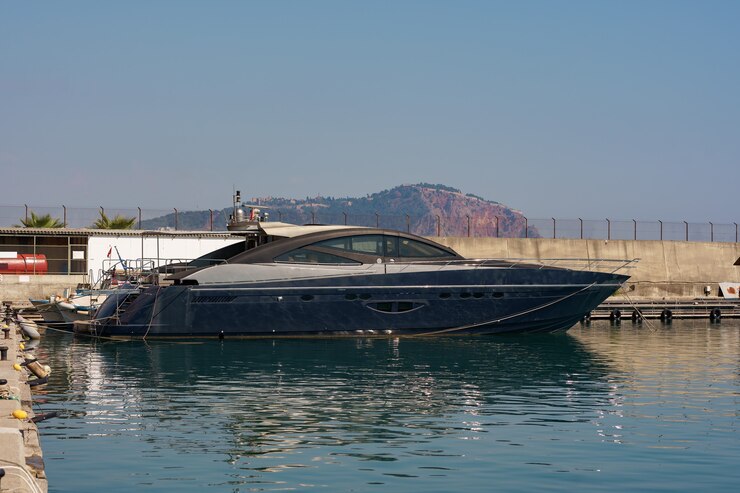
1. Motor Yachts
Motor yachts are powered by engines, and they are designed for luxury cruising. They come in a variety of sizes and styles, ranging from smaller, more intimate vessels to larger, more spacious yachts that can accommodate several guests.
2. Sail Yachts
Sail yachts are powered by the wind and are perfect for those who want a more adventurous boating experience. They are typically larger than motor yachts and offer more space for guests to relax and enjoy the scenery.
3. Catamarans
Catamarans are two-hulled vessels that are known for their stability and comfort. They offer spacious cabins, large outdoor areas, and plenty of room for guests to relax and enjoy the surroundings.
4. Power Catamarans
Power catamarans are similar to catamarans, but they are powered by engines. They are perfect for those who want the stability of a catamaran, but with the speed and convenience of a motor yacht.
5. Trawlers
Trawlers are designed for long-distance cruising and are known for their spacious interiors, comfortable cabins, and excellent fuel efficiency. They are perfect for those who want to explore distant destinations and enjoy extended periods at sea.
Yacht Sizes

A. Small Yachts
Small yachts are typically less than 40 feet in length and are perfect for short trips and intimate gatherings. They are ideal for those who want a simple, low-maintenance vessel that is easy to handle.
B. Mid-Size Yachts
Mid-size yachts are typically between 40 and 80 feet in length. They offer more space and amenities than small yachts, and they are perfect for those who want a comfortable and spacious vessel for extended trips.
C. Large Yachts
Large yachts are typically over 80 feet in length and offer an unparalleled level of luxury and comfort. They are perfect for those who want the ultimate boating experience, with spacious cabins, large outdoor areas, and top-of-the-line amenities.
Perks Of Buying A Yacht
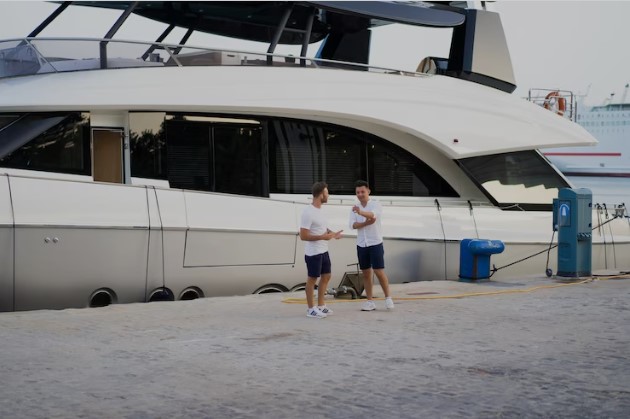
1. Freedom and independence
With a yacht, you have the freedom to travel to any location you choose and set your itinerary. You have the independence to spend time on the water and explore new and exotic destinations.
2. Privacy and exclusivity
Yachts offer a level of privacy and exclusivity that is difficult to find on land. You can escape the crowds and enjoy your own space, away from the hustle and bustle of everyday life.
3. Luxury and comfort
Yachts are designed for luxury and comfort, with high-end amenities and spacious living quarters. You can relax in comfort and style, and enjoy all the amenities you would expect from a five-star hotel.
4. Adventure and excitement
Owning a yacht opens up a world of adventure and excitement. You can go fishing, diving, and exploring, and experience new and exciting destinations.
5. Increased social status
Owning a yacht is often seen as a symbol of success and social status, and can be a great way to network and make new connections.
6. Investment Opportunity
Yachts can also be a wise investment, as they often hold their value over time and can generate rental income if you choose to charter your yacht.
7. Quality family time
Spending time on a yacht can provide quality family time and create unforgettable memories. It’s a great way to bond and connect with loved ones while experiencing new and exciting destinations.
There are many beautiful places you can visit on a yacht, depending on your preferences and interests.
Listed Below Are Some Of The Destinations That Are In High Demand:

A. Mediterranean
The Mediterranean is one of the most popular yacht destinations in the world, offering stunning scenery, warm weather, and a rich cultural heritage. You can visit countries like France, Italy, Spain, Greece, and Turkey, and experience their unique history, architecture, food, and wine.
B. Caribbean
The Caribbean is a popular destination for yacht enthusiasts, offering crystal-clear waters, white sand beaches, and a warm and relaxed atmosphere. You can visit islands like the Bahamas, Barbados, Saint Lucia, and the Virgin Islands, and enjoy activities like snorkeling, diving, and island-hopping.
C. Maldives
The Maldives is a breathtaking destination for yacht enthusiasts , offering a remote and unspoiled environment, with pristine beaches, vibrant coral reefs, and abundant marine life. You can explore the atolls, relax in the sun, and enjoy the tropical paradise that is the Maldives.
D. South Pacific
The South Pacific is a popular destination for yacht enthusiasts, offering a remote and exotic environment, with lush tropical landscapes, turquoise waters, and abundant marine life. You can visit countries like Fiji, Tahiti, and the Cook Islands, and experience their unique culture, history, and natural beauty.
E. Thailand
Thailand is a popular destination for yacht enthusiasts, offering stunning beaches, tropical landscapes, and a rich cultural heritage. You can visit the famous islands of Phuket, Koh Samui, and Koh Phi Phi, and experience their stunning scenery, vibrant nightlife, and tropical paradise.
When it comes to buying a yacht, understanding the different types and sizes of yachts is essential. From small and intimate vessels to large and luxurious yachts, there is a type and size of yacht that is perfect for everyone. With this guide, you will be well on your way to making an informed decision when it comes to buying your first yacht.
- Travel To Turkey
- 12+ Best Hamilton Island Restaurants: Must Visit In 2023!
- Top Luxury Escapes Bucket List Ideas For Wanderlust Jetsetters
- buying a yacht
- convenience of a motor yacht
- first-time yacht buyer
- luxury yacht
- luxury yacht charter
- sizes of yachts
Share on Social Media
Arnab Day is a passionate blogger who loves to write on different niches like technologies, dating, finance, fashion, travel, and much more.
Leave a reply cancel reply.
Your email address will not be published. Required fields are marked *

Best Time To Visit Iceland, Nature Lover’s Paradise

How to Organize a Team-Building Retreat in Ontario?

How To Create A Gallery Wall On A Budget

Top Five Treks in Nepal

The New Seven Wonders of the World

10 Famous Temples in South India for a Spiritual Journey

Top Sahara Desert Countries You Should Visit
Boat-Specs.com
Sailboat specifications.
Definitions
Length overall (LOA)
Length of water line (lwl)
Length between perpendiculars (LFF)
Rated length
he hull of a yacht is a complex three-dimensional shape, which cannot be defined by any simple mathematical expression. Gross features of the hull can be described by dimensional quantities such as length, beam and draft, or non-dimensional ones like prismatic coefficient or slenderness (length/displacement) ratio. For an accurate definition of the hull the traditional lines drawing; is still a common tool, although most professional yacht designers now take advantage of the rapid developments in CAD introduced in Chapter 1.
In this chapter we start by defining a number of quantities, frequently referred to in yachting literature, describing the general features of the yacht. Thereafter, we will explain the principles of the traditional drawing and the tools required to produce it. We recommend a certain work plan for the accurate production of the drawings and, finally, we show briefly how the hull lines are generated in a modern CAD program.
The list of definitions below includes the basic geometrical quantities used in defining a yacht hull. Many more quantities are used in general ship hydrodynamics, but they arc not usually referred to in the yachting field. A complete list may be found in the International Towing Tank Conference (ITTC) Dictionary of Ship Hydrodynamics.
The maximum length of the hull from the forwardmost point on the stem to the extreme after end (see Fig 3.1). According to common practice, spars or fittings, like bowsprits, pulpits etc are not included and neither is the rudder.
The length of the designed waterline (often referred to as the DWL).
This length is not much used in yachting but is quite important for ships. The forward perpendicular (FP) is the forward end of the designed waterline, while the aft perpendicular (AP) is the centre of the rudder stock.
The single most important parameter in any rating rule. Usually L is obtained by considering the fullness of the bow and stern sections in a more or less complex way.
The maximum beam of the hull excluding fittings, like rubbing strakes.

Fig 3.1 Definitions of the main dimensions
Beam of waterline (bwl)
Displacement
The maximum beam at the designed waterline.
The maximum draft of the yacht when floating on the designed waterline. Tc is the draft of the hull without the keel (the 'canoe' body).
The vertical distance from the deepest point of the keel to the sheer line (see below). Dc is without the keel.
Could be either mass displacement (m) ie the mass of the yacht, or volume displacement (V or V), the volume of the immersed part of the yacht. mc, Vc and Vc are the corresponding notations without the keel.
Midship section For ships, this section is located midway between the fore and aft perpendiculars. For yachts it is more common to put it midway between the fore and aft ends of the waterline. The area of the midship section (submerged part) is denoted AM, with an index 'c' indicating that the keel is not included.
Maximum area section For yachts the maximum area section is usually located behind the midship section. Its area is denoted Ax (AXc).
Prismatic coefficient This is the ratio of the volume displacement and the maximum section (CP) area multiplied by the waterline length, ie CP = V/(AX • Lwl). This value is very much influenced by the keel and in most yacht applications only the canoe body is considered: CPc = Vc(AXc • Lwl). See Fig 3.2. The prismatic coefficient is representative of the fullness of the yacht. The

Circumscribed cylinder volume = v = L^ Ay
Fig 3.2 The prismatic coefficient

BOX WL WL c
Circumscribed box volume =
Fig 3.3 The block coefficient
Block coefficient ( CB)
Centre of buoyancy (B)
Centre of gravity (G)
Freeboard fuller the ends, the larger the Cp. Its optimum value depends on the speed, as explained in Chapter 5.
Although quite important in general ship hydrodynamics this coefficient is not so commonly used in yacht design . The volume displacement is now divided by the volume of a circumscribed block (only the canoe body value is of any relevance) CBc = V J(Lwl • BWL • Tc). See Fig 3.3.
The centre of gravity of the displaced volume of water, its longitudinal and vertical positions are denoted by LCB and VCB respectively.
The centre of gravity of the yacht must be on the same vertical line as the centre of buoyancy. In drawings G is often marked with a special symbol created by a circle and a cross. This is used also for marking geometric centres of gravity. See. for instance, Figs 5.27 or 8.2.
The intersection between the deck and the topside. Traditionally, the projection of this line on the symmetry plane is concave, the 'sheer* is positive. Zero and negative sheer may be found on some extreme racing yachts and powerboats.
The vertical distance between the sheer line and the waterline.
Tumble home
When the maximum beam is below the sheer line the upper part of the topsides will bend inwards (see Fig 3.4). To some extent this reduces the weight at deck level, but it also reduces the righting moment of the
Fig 3.4 Definition of tumble home and flare

Tumble home crew on the windward rail. Further, the hull becomes more vulnerable to outer skin damage in harbours.
Flare The opposite of tumble home. On the forebody in particular, the sections may bend outwards to reduce excessive pitching of the yacht and to keep it more dry when beating to windward.
Scale factor (a) This is not a geometrical parameter of the hull, but it is very important when designing a yacht. The scale factor is simply the ratio of a length (for instance the Lw,) at full scale to the corresponding length at model scale. Note that the ratio of corresponding areas (like the wetted area) is a2 and of corresponding volumes (like displacement) a3.
Lines drawing A complete lines drawing of the YD 40 is presented in Fig 3.5. The hull is shown in three views: the profile plan (top left), the body plan (top right) and half breadth plan (bottom). Note that the bow is to the right.
In principle, the hull can be defined by its intersection with two different families of planes, and these are usually taken as horizontal ones (waterlines) and vertical ones at right angles to the longitudinal axis of the hull (sections). While the number of waterlines is chosen rather arbitrarily, there are standard rules for the positioning of the sections. In yacht architecture the designed waterline is usually divided into ten equal parts and the corresponding sections are numbered from the forward perpendicular (section 0) backwards. At the ends, other equidistant sections, like # 11 and # 1 may be added, and to define rapid changes in the geometry, half or quarter sections may be introduced as well. In Fig 3.5 half sections are used throughout.
The profile is very important for the appearance of the yacht, showing the shapes of the bow and stern and the sheer line. When drawing the waterlines, displayed in the half breadth plan, it is most helpful if the lines end in a geometrically well defined way. Therefore a 'ghost" stem and a 'ghost' transom may be added. The ghost stem is the imagined sharp leading edge of the hull, which in practice often has a rounded stem, and the ghost transom is introduced because the real transom is often curved and inclined. If an imagined vertical transom is put near the real one at some convenient station, it will facilitate the fairing of the lines. The drawing of Fig 3.5 has been produced on a CAD system and no ghost stem is shown. However, a ghost transom is included.
In the body plan, the cross sections of the hull are displayed. Since the hull is usually symmetrical port and starboard, only one half needs to be shown, and this makes it possible to present the forebody to the right and the afterbody to the left. In this way mixing of the lines is avoided and the picture is clearer. Note that in the figure the half stations are drawn using thinner lines.
The above cuts through the hull are sufficient for defining the shape, but another two families of cuts are usually added, to aid in the visual perception of the body. Buttocks are introduced in the profile plan,

* * ^ "i * 2 § 2 II II II II II II II ll II
showing vertical, longitudinal cuts through the hull at positions indicated in the half breadth plan. The diagonals in the lower part of the half breadth plan are also quite important. They are obtained by cutting the hull longitudinally in different inclined planes, as indicated in the body plan. The planes should be as much as possible at right angles to the surface of the hull, thus representing its longitudinal smoothness. In practice, the flow tends to follow the diagonals, at least approximately, so that they are representative of the hull shape as "seen' by the water. Special attention should be paid to the after end of the diagonals, where knuckles, not noticcd in the other cuts, may be found, particularly on lOR yachts from the 1970s and the 1980s. Almost certainly, such unevenncss increases the resistance and reduces the speed of the yacht.
The other line in the lower part of the half breadth plan is the curve of sectional areas, representing the longitudinal distribution of the submerged volume of the yacht. The value at each section is proportional to the submerged area of that section, while the total area under the curve represents the displacement (volume). A more detailed description of the construction of the curve of sectional areas will be given in Chapter 4.
In order to define exactly the shape of the hull a table of offsets is usually provided by the designer. This is to enable the builder to lay out the lines at full size and produce his templates. Offsets are always provided for the waterlines, but the same information may be given for diagonals and/or buttocks also. Note that all measurements are to the outside of the shell.
The drawing should be made on a special plastic film, available in different thicknesses. The film is robust and will not be damaged by
Photo 3.6 Tools (triangle, plastic film, straight edge, brush, pens, pencil, erasing shield and eraser)

Photo 3.7 Tr¿\nster of measures from body plan (top) to half breadth plan (bottom) using a paper ribbon

erasing. Furthermore, it is unaffected by the humidity of the air. which may shrink ordinary paper.
Since the film is transparent the grid for the lines drawing is drawn on the back so that it will remain, even after erasing the hull lines on the front many times. Great care must be exercised when drawing the grid, making sure that the alignment and spacing are correct and that all angles arc cxactly 90°. In Fig 3.5 the grid is shown as thin horizontal and vertical lines, representing waterlines, buttocks and stations.
Black ink should be used when drawing the grid and preferably when finishing the hull lines also. However, when working on the lines a pencil and an eraser are needed. There are, in fact, special pencils and erasers for this type of work on plastic film. An erasing shield and a brush are also most useful (see Photo 3.6).
For creating the grid a long straight edge is required, together with a
Photo 3.8 Ducks and a spline used for drawing a water Iine

Photo 3.9 Templates used for drawing lines with large curvature

large 90° set square. It is very convenient to have a bunch of paper ribbons, which can be used for transferring different measures from one plan to the other. For example, when drawing a waterline the offsets of this line may be marked on the ribbon directly from the body plan and moved to the half breadth plan (Photo 3.7).
To draw the hull lines it is necessary to have a set of splines and weights or ducks. Long, smooth arcs can be created when bending the splines and supporting them by the ducks at certain intervals. Photo 3.8 shows how these tools are used when drawing a waterline. The splines should be made of plastic, somewhat longer than the hull on the drawing, and with a cross-section of about 2.5 mm2. Many different types of ducks can be found, some of them home made. Preferably,

Photo 3.10 PI an i meter they should be made of lead, and the weight should be between 1.5 and 2.5 kg. To be able to support the spline, they should have a pointed nose, as shown in Photo 3.8.
The splines are needed when drawing the lines in the profile and half breadth plans. However, the lines of the body plan are usually too curved for the splines, so it is necessary to make use of a set of templates especially developed for this purpose. The most well known ones are the so called Copenhagen ship curves, the most frequently used of which are shown in Photo 3.9.
A very convenient instrument, well known in naval architecture, is the planimeter, used for measuring areas (see Photo 3.10). The pointer of the planimeter is moved around the area to be measured, and the change in the reading of the scale when returning to the point of departure gives the area enclosed by the path followed. Considering the difficulty in following exactly any given line the accuracy is surprisingly high, more than adequate for the present purposes. The need for measuring areas will be explained in the next chapter.
Since many calculations have to be carried out when preparing the drawings, and indeed in the whole design process, an electronic calculator is essential. A simple one would be sufficient in most cases, but a programmable calculator would simplify some of the calculations, particularly if a planimeter is not available. Most scientific calculators have programs for calculating areas with acceptable accuracy, and programs are available for most of the calculations described in the next chapter.
Designing the hull is a complex process, and many requirements have to be considered. One difficulty is that important parameters, such as the displacement cannot be determined until the lines have been fixed. This calls for an iterative method. Such a method is also required in the fairing of the lines. The problem is to make the lines in one projection correspond to smooth lines in the other two projections. For an inexperienced draftsman this problem is a serious one, and many trials may be needed to produce a smooth hull.
While the preferred sequence of operations may differ slightly between yacht designers the main steps should be taken in a certain order. In the following, we propose a work plan, which has been found effective in many cases. It should be pointed out that the plan does not take into account any restrictions from measurement rules.
Step 1: Fix the main dimensions These should be based on the general considerations discussed in Chapter 2, using information on other yachts of a similar size, designed for similar purposes. This way of working is classical in naval architecture, where the development proceeds relatively slowly by evolution of previous designs. It is therefore very important, after deciding on the size of the yacht, to find as much information as possible on other similar designs. Drawings of new yachts may be found in many of the leading yachting magazines from all over the world.
The dimensions to fix at this stage are: length overall, length of the waterline, maximum beam, draft, displacement, sail area, ballast ratio, prismatic, coefficient and longitudinal centre of buoyancy. One of the aims of this book is to help in the choice of these parameters and to enable the reader to evaluate older designs when trying to find the optimum for his own special demands.
Step 2: Draw the profile As pointed out above, this step takes much consideration, since the aesthetics of the yacht are, to a large extent, determined by tBfe pi^ffle-
Step 3: Draw the midship section The midship section can be drawn at this stage, or, alternatively, the maximum section if it is supposed to be much different. This may occur if the centre of buoyancy is far aft. The shape of the first section drawn is important, since it determines the character of the other sections.
Step 4: Check the displacement To find the hull displacement calculate (or measure) the submerged area of the section just drawn and multiply by the waterline length and the prismatic coefficient chosen for the hull. From the ballast ratio, the keel mass can be computed and the volume can be found, dividing by the density of the material (about 7200 kg/m3 for iron and 11300 kg/m- for lead). Assume that the rudder displacement is 10% of that of the keel and add all three volumes. If the displacement thus obtained is different from the prescribed one, return to step 3 and change accordingly.
The procedure described is for a fin-keel yacht. For a hull with an integrated keel, as on more traditional yachts, the prismatic coefficient usually includes both the keel and the rudder.
Step 5: Draw the designed waterline One point at or near the midship station is now known, together with the two end points from the profile, so now a first attempt can be made to draw the designed waterline.
Step 6: Draw stations 3, 7 and the transom The waterline breadth is now known, as well as the hull draft, and the sections should have a family
resemblance to the midship section. Often it is helpful to draw a ghost transom behind the hull.
Step 7: Draw new waterlines Two or three waterlines can now be drawn above and below the DWL. If the appearance is not satisfactory, go back to step 6 and change.
Steps 8 and 9: Add new sections and waterlines
Once this is done, sections I-9 should be completed as well as 7-10 waterlines. Constant adjustments, have to be made in order to create smooth lines in the body plan, as well as in the half breadth plan.
Step 10: Recheck the displacement and the longitudinal centre of buoyancy The curve of sec tional areas can now be constructed. Its area gives the displacement (excluding that of keel and rudder) and its centre of gravity corresponds to the longitudinal position of the centre of buoyancy. If not correct, adjustments have to be made from steps 5 or 6,
Step 11: Draw diagonals Inspect the smoothness, particularly near the stern. Adjust if necessary.
Step 12: Draw buttocks This is the final check on the smoothness. Usually only very minor corrections have to be made at this stage.
Computer aided design of hulls
As mentioned in Chapter 1, most CAD programs use master curves for generating the hull surface. Each curve is defined by a number of points, called vertices. Photo 3.11 shows, in a plan view, the grid of master curves used for generating the YD-40 hull. One of the transverse curves has been selected in Photo 3.12 and it can be seen how the smooth hull surface is generated inside the curve, which is shown as piece-wise linear between the vertices.
Photo 3.11 Grid of master curves used for the YD-40 (the vertical line to the right marks the origin of the coordinate system)
Photo 3.12 A section with vertices (crosses), master curve (between the crosses), hull surface and cuwature (outermost line)

The task of the designer is to specify the vertices in such a way that the desired hull shape is created.There are different ways of achieving this. Some programs start from a long cylindrical body or a box, while others start from a flat rectangular patch, defined by an orthogonal grid. These original shapes are then distorted by moving the vertices around, and it is relatively easy to produce a yacht-like body. However, it takes experience and experimentation to obtain a shape that satisfies criteria set up beforehand. In practice, designers very seldom start from scratch, but work from earlier designs, which already have a desirable shape and a known grid of master curves surrounding it. Since most new designs are evolutions of previous ones this approach is very natural.
A problem encountered when the first CAD programs for yachts appeared was that the scale on the screen was too small, and the resolution too low to enable the designer to create fair lines. Small bumps on the surface could not be detected 011 the screen, and it sometimes happened that the bumps were noticed only after the start of the hull construction . Therefore the CAD program developers introduced plots of the curvature of lines on the hull. Such a plot is shown.in Photo 3.12. The curvature of the line, which essentially corresponds to a section, is almost constant, except at the ends where it goes to zero.
Photo 3.13 illustrates the sensitivity of the curvature to small changes of the surface. The sheer line is shown in a plan view. In the top photo (the real design) the curvature is smooth and relatively constant along the hull. In the bottom photo one vertex point has been moved 10 mm at full scale perpendicular to the surface. The resulting change in the sheer line is so small that it cannot be detected by eye, but the curvature exhibits a considerable bump and some smaller fluctuations, showing that the line is not smooth. By looking at the curvature, lines may thus be generated that look fair even at full scale.
Photo 3.13 Sheer line with vertices and curvature. (top) Real design. (bottom) One vertex point moved 10 mm

Photo 3,14 Perspective view A great advantage of most CAD programs is that the hull may be of the YD-40 shown in perspective. As pointed out in Chapter 1 it is important to study the sheer line in particular from different angles, since the impression of the hull contour in reality is also influenced by the beam distribution, which is not visible if only the profile view is studied. Fig 3.14 shows the YD-40 in perspective, and a good impression can be obtained of the shape. "
By using a CAD program a fair hull can be produced rapidly and different requirements may be satisfied without too much work, such as a given prismatic coefficient or longitudinal centre of buoyancy. Meeting such requirements accurately in a manual process is extremely time consuming, so it is understandable that CAD techniques are always used nowadays by professional designers. However, due to the considerable cost of a CAD system, most amateur designers will still have to use the manual approach described above.
Continue reading here: Hydrostatics And Stability
Was this article helpful?
Recommended Programs

Myboatplans 518 Boat Plans
Related Posts
- Methodology - Ship Design
- Plan Drawing Fregatt - Rigging
- Hull Construction - Ship Design
- Catamaran Design Guide - Catamarans Guide
- Hull Hydrodynamics and Design
- LOD and LOA - Cruising Sailboats Reference
Readers' Questions
What do you understand by drawing defines the shapes of the hull.?
How to figure the width to height to length of a yacht?
To figure out the width, height, and length of a yacht, you typically need to refer to the yacht's specifications provided by the manufacturer, yacht designer, or owner. These specifications should include the appropriate measurements. Consult the yacht's specifications: Look for the official documentation or technical information provided for the yacht. This documentation usually includes the length, width, and height of the yacht, referred to as LOA (Length Overall), Beam, and Draft, respectively. The specifications are usually available in brochures, user manuals, or on the official website of the yacht manufacturer. Seek professional advice: If you cannot find the specifications yourself or need more specific information, consider reaching out to yacht brokers, yacht builders, naval architects, or other professionals in the yachting industry. They have extensive knowledge and can guide you with accurate measurements or provide information by using the yacht's model or brand. Measure the yacht yourself: If you have physical access to the yacht and cannot find the specifications through other means, you can measure it directly. However, this method is less accurate and should only be used as a last resort. Use a measuring tape or other appropriate tools to measure the overall length, width or beam, and height. Ensure to measure from fixed reference points for consistency and accuracy. Remember that yachts come in various sizes, designs, and layouts. The width or beam, for example, may be different at different points along the vessel's length due to design variations. It is essential to refer to the official specifications or seek professional advice for the most precise and reliable measurements.
Can you use geometry on boats?
Yes, geometry can be applied to various aspects of boats, particularly in the design and construction phase. Here are a few examples: Hull Design: Geometry is crucial in designing the shape and dimensions of a boat's hull. The angles, curves, and mathematical calculations are used to ensure stability, hydrodynamics, and buoyancy. Stability Analysis: Geometry is used to determine the center of buoyancy, center of gravity, and metacenter of a vessel. These calculations are essential for assessing a boat's stability, both at rest and in motion. Navigation and Bearings: Geometric concepts such as angles, triangles, and trigonometry are used to calculate headings, course corrections, and bearings while navigating a boat. Sail Measurement and Adjustments: Sailboats utilize various geometric principles to determine sail sizes, aspect ratios, and shapes. The geometry of sail adjustments, such as tightening or loosening the sail, can affect the boat's speed and performance. Nautical Charts: Geometry plays a vital role in nautical charting, which involves representing the Earth's curved surface on a flat chart. Projections, grid systems, and coordinate systems are employed to accurately depict and navigate waterways. These are just a few examples of how geometry can be applied to boats. Overall, geometry is critical in ensuring boat design, navigation, and performance, making it an important aspect of the boating industry.
How to find ship displacement from submerged area?
To find the ship displacement from submerged area, you can follow these steps: Determine the underwater or submerged area of the ship. This can be done by calculating the area of the ship's hull that is below the waterline when it is fully submerged. Convert the area into a volume by multiplying it by the ship's beam (width) or mean draft (depth). Multiply the volume by the density of the water. The density of water varies slightly depending on temperature and salinity, but a typical value is around 1,000 kilograms per cubic meter. The result of this calculation will be the ship's displacement. It represents the weight of the water displaced by the ship when it is fully submerged. Note: This method assumes that the ship's hull has a constant shape below the waterline. In reality, the shape may vary, especially towards the ends of the ship.
How to draw a simple ship?
To draw a simple ship, follow these step-by-step instructions: Start by drawing a horizontal line slightly curved at the ends to create the ship's hull. Add a smaller curved line above the hull to outline the ship's deck. At the front of the ship, draw a triangular shape for the bow. On top of the deck, draw a small rectangular structure or cabin. Add a flagpole at the back of the deck by drawing a long, thin rectangle. Draw a small rectangle or square at the top of the flagpole for the flag. Next, add a slightly curved line near the waterline for the keel of the ship. On both sides of the hull, draw a series of diagonal lines to create the ship's planking. To indicate windows or portholes, draw small oval or circular shapes along the cabin. Add a couple of mast poles on the deck. To do this, draw two vertical lines with a horizontal line connecting them at the top. On top of the mast poles, add triangular or rectangular shapes for the sails. Finally, erase any unnecessary guidelines, and you can add more details like waves or seagulls to complete your simple ship drawing. Remember, this is just one way to draw a simple ship. Feel free to modify the design or add additional elements to make it your own!
How to draw a pin keeldrawing tutorialtop keel?
To draw a pin keel, follow these steps: Begin by drawing a slightly curved horizontal line. This line will serve as the water surface. Next, draw a long vertical line that will represent the keel. The keel should start at the bottom of the water surface line and extend downward. At the bottom of the vertical line, draw a slightly curved horizontal line. This line will represent the lower part of the keel. On the left side of the keel, draw a diagonal line extending outward. This line will represent the forward part of the keel. Repeat the previous step on the right side of the keel, drawing a diagonal line to represent the aft part. Connect the ends of the diagonal lines with a curved line, forming the bottom part of the keel. Add additional detail to the keel by drawing a small horizontal line near the top. This line represents the top part of the keel. Finally, erase any unnecessary lines and add shading to give the keel more depth and dimension. Remember to take your time and practice as much as needed to improve your drawing skills.
How do you draw a ship?
Drawing a ship can be a fun and creative process. Here's a step-by-step guide on how to draw a ship: Start by drawing a long, slightly curved horizontal line in the center of your paper. This line will serve as the ship's waterline. From one end of the waterline, draw a slanted rectangle shape, slightly wider at the bottom than the top. This will be the ship's hull. At the other end of the waterline, draw a smaller rectangle shape, slightly tilted upward. This will be the ship's bow. Connect the bow and the hull with two diagonal lines, creating the ship's front structure. Add a large, slightly curved rectangle shape at the top of the hull. This will be the main deck of the ship. Draw a smaller rectangle shape above the main deck to represent the ship's superstructure. Sketch two parallel, slanted lines on the front of the ship's superstructure to create the pilot house. On the main deck, draw a few rectangular shapes to indicate windows or portholes. Add details like railing, stairs, and lifeboats on the sides and top of the ship as desired. Extend the hull below the waterline using a curved line to give the ship depth. For the finishing touches, you can draw some waves around the ship, seagulls in the sky, or a flag on top. Remember to be creative and modify the design as you like. Don't worry if your drawing doesn't turn out perfect at first; practice makes perfect!
What hull curves do yachts fallow is it x squared?
The hull curves of yachts can vary depending on the design and purpose of the yacht. While some yacht hulls may follow a curve that resembles the function of x squared, others may follow different curves such as parabolic curves, ellipses, catenary curves, or other mathematical shapes. The specific curvature of a yacht's hull is determined by factors such as the desired speed, stability, maneuverability, and hydrodynamic efficiency of the vessel. It is typically designed by naval architects and engineers who consider various factors including the size and weight distribution of the yacht, the intended use (e.g., racing, cruising, etc.), and materials used in construction. In summary, while some yachts may have hull curves similar to x squared, there is no universal standard hull curve for all yachts. The hull design depends on various factors and can incorporate different mathematical curves to achieve specific performance characteristics.
How to calculate the curvature of a boat?
To calculate the curvature of a boat, you would need to determine the radius of its curvature. The curvature refers to the degree of how much the boat's hull curves or bends. Gather the measurements: You will need the length and width measurements of the boat. These measurements can be obtained from the boat's specifications or by physically measuring it. Determine the midpoint: Locate the midpoint of the boat's length. This can be done by dividing the boat's length measurement by 2. Measure the rise: Starting from the midpoint, measure the distance between the bottom of the boat's hull and a straight line connecting the bow and stern (i.e., the rise). Measure the run: Measure the distance between the midpoint and the bottom of the boat's hull at the bow and stern. Calculate the radius of curvature: The radius of curvature can be calculated using the following formula: Radius = (run^2 + rise^2) / (8 x rise). The curvature: The curvature is calculated as the reciprocal of the radius of curvature. It's important to note that this calculation assumes a boat's hull shape can be represented by a simple section of a circle. More complex hull shapes, such as those with multiple curves or irregular shapes, may require different mathematical models or numerical methods to accurately determine curvature.
How to measure the curveture of a boat hull?
There are several methods to measure the curvature of a boat hull. Here are three common techniques: Profiling: This method involves taking measurements at specific points along the hull's surface to understand the curvature. You can use a flexible measuring tape or string to measure the distance from the hull to a straight reference line at different points along the boat's length. These measurements can then be plotted on a graph to depict the curvature of the hull. Reflection Method: For this technique, you need a laser level and a measuring tape. Firstly, position the laser level at a fixed distance from the boat hull and horizontally direct the laser beam towards the hull. The laser beam will be reflected back from the hull surface. Measure the distance from the laser level to the hull at different points along the boat's surface. These measurements can be used to calculate the curvature of the hull. 3D Scanning: Utilizing modern technology, you can use a 3D scanner to create a digital model of the boat hull. The scanner emits laser beams or projects structured light patterns onto the hull, capturing its shape in detail. The resulting 3D model can then be used to measure the curvature of the hull accurately. It is important to note that measuring the curvature of a boat hull may require specific tools and expertise. Hence, it is advised to consult with industry professionals or specialists for accurate measurements.
How to draw a yacht keel?
To draw a yacht keel, you can follow these steps: Start by drawing a horizontal line on your paper. This line will serve as the waterline. From the center point of the waterline, draw two vertical lines going downward to create the main part of the keel. These lines should taper towards the bottom. At the bottom of the keel, draw a horizontal line connecting the two vertical lines. This will form the bottom edge of the keel. Now, draw a diagonal line on each side of the keel, starting from the top and curving slightly outward. These lines will form the shape of the keel as it narrows towards the top. Connect the ends of the diagonal lines at the top with a smooth curve to create the rounded shape of the keel. Next, draw horizontal lines across the keel to represent the different sections or layers. These lines can be evenly spaced or closer together at the top and gradually getting wider towards the bottom. Add details such as ribbing or reinforcements by drawing diagonal lines across the keel, intersecting the horizontal lines. To give the keel a more realistic look, you can shade the bottom part and add some shadow where it meets the waterline. Finally, you can add additional details such as a bulbous bow or a fin at the bottom of the keel based on the specific design of the yacht you are drawing. Remember to sketch lightly at first and gradually darken your lines as you refine the shape. And don't forget to have fun and experiment with different styles and variations to make your drawing unique!
How to draw a boat into transverse stations?
Drawing a boat into transverse stations can be done by following these steps: Start by selecting a suitable scale for the drawing. This will depend on the size of the boat you want to draw and the size of the paper or canvas you are using. Begin by drawing a horizontal line across the paper, representing the waterline. Next, draw vertical lines representing the transverse stations at regular intervals along the waterline. These lines should be evenly spaced and represent the cross-sections of the boat at different points along its length. Use reference drawings or images of the boat to guide your drawing. Start by drawing the outline of the boat's hull within each station. Pay attention to the curvature and tapering of the hull as it moves towards the bow and stern. After drawing the outline, add any additional details such as deck lines, windows, hatches, and other features of the boat. Use shading techniques to add depth and dimension to the drawing. Pay attention to the light source and add shadows accordingly to create a realistic representation of the boat. Finally, go over your drawing and make any necessary adjustments or corrections to ensure accuracy.
What is nonprismatic hull?
A nonprismatic hull is a type of hull shape in naval architecture that does not conform to the standard prismatic shape of traditional sailing vessels. Nonprismatic hulls are designed to increase performance in certain areas such as speed and efficiency, as well as to reduce drag and enhance maneuverability. Nonprismatic hulls are also often used as part of a wave piercing design to cut through wave crests, thus reducing the size of the wake behind the ship.
How to design a schooner hull?
Research the history of schooner hulls and their design features. This will help you understand the shipbuilding principles and methods used in their construction. Consider the type of schooner you want to design. Is it a racing vessel or a cruising boat? This will help you determine the size, weight and other characteristics of the hull. Consider the type of material you will use for the schooner. Traditionally, schooner hulls have been made of wood or fiberglass, but there are other materials that can be used as well. You need to choose a material that meets your needs and budget. Work with an experienced maritime designer or drafter to create a 3D model of the schooner hull. This will help you visualize the hull and make sure it meets your specifications. Have a qualified shipwright or boat builder construct your schooner. Ensure that the schooner is tested and certified by a naval architect before you take it out on the water.
How to draw hull lines plan from boat existing images in reverse engineering?
Take a picture of the boat's existing lines plan. Import the image into a vector graphic program such as Inkscape, Adobe Illustrator, or Corel Draw. Trace the contours of the boat's hull using the Pen Tool or other trace tool in the program. Adjust the lines to make sure they accurately represent the boat's shape and contours. Once the lines plan is complete, use a ruler to draw perpendicular lines from the boat's existing lines plan as a reference for the hull. Use the curved line tool to refine the shape of the hull and make sure everything is in proportion and accurate. Double-check to make sure the hull lines plan is correct, and save the file for future reference.
What does half a sideways figure eight mean on a ship drawing?
Half a sideways figure eight on a ship drawing typically denotes the ship's waterline—the line where the ship sits in the water.
How to work out the shape and profile of a yatch datum line?
Establish the design criteria and parameters of the yacht. This should include the length, width, height and any other characteristics relevant to the design of the yacht. Define the design goals and objectives of the yacht, including the purpose and function of the yacht, how it will be used, and what type of sailing or other activities will take place on it. Choose an appropriate hull shape and size for the yacht based on the design criteria, goals and objectives. Create a 3D computer model of the yacht design, incorporating the appropriate hull shape and size. Use the model to define a datum line for the yacht, which will help to accurately measure the craft's performance and characteristics. The datum line should run from the center of the waterline around the hull to the transom. Using the 3D model, define the profile of the yacht by “lofting” the curves of the hull and the deck. Refine the design by adjusting the curves of the hull and deck to ensure that the yacht's performance characteristics are maximized. Use the computer model to run “virtual wind tunnel” tests on the design, to ensure that its performance characteristics are optimized.
How to draw a boat on water?
Start by sketching the basic shape of the boat. Start with a long, rectangular shape to form the hull of the boat. Add a slight curve to the top of the boat to give it an authentic boat shape. Draw a smaller rectangular shape for the cabin of the boat. Sketch two triangular shapes on the left and right side of the cabin for the sails. Draw a series of small circles along the bottom of the boat to create the waterline. Now add the details to your boat: windows, doors, life preservers, etc. Finally, draw some small waves around the boat to create the illusion of the boat sailing on water.
What are fair lines and sheer lines of a yacht?
Fair lines are the contours of the yacht's hull. Sheer lines are the long, gradual arch of the deck, starting at the bow and extending to the stern.
How to draw a hardshine boat hull quickly?
To draw a hardshine boat hull quickly, you can follow these steps: Start by drawing a horizontal line to represent the waterline. This line will serve as the base for the boat hull. Sketch a rough outline of the boat hull shape above the waterline. Keep in mind that hardshine boat hulls are typically streamlined and have a sharp, angular shape. Add a slightly curved line below the waterline to depict the bottom part of the hull. The curve should be gentle and gradually merge into the horizontal waterline. Extend two diagonal lines downward from the front end of the boat hull to create the bow. The bow should be pointed and sharp to cut through the water efficiently. Add a small transom at the rear end of the boat hull. The transom is usually flat or slightly curved upward. Sketch two straight lines from the bow to the stern to represent the deck of the boat. Draw a horizontal line across the middle section of the hull to indicate a separation or border between the upper and lower parts. Add details to the hull, such as chines (angled lines along the sides of the hull) and spray rails (small fins or ridges). These elements contribute to the boat's stability and improve its performance in the water. Shade the lower portion of the hull with a darker tone to emphasize the hardshine effect. Use quick and light strokes to achieve a glossy appearance. Finally, erase any unnecessary guidelines and refine the drawing as needed. Remember, practicing and experimenting with different techniques will help you improve your drawing skills and speed over time.
How to measure a ships hull shape from inside?
One way to measure a ship's hull shape from inside is by using 3D laser scanning. This technique uses lasers to take precise measurements of a ship's inner hull shape. The lasers scan around the interior of the ship and create a 3D image of the ship's shape. This data can then be used to create a precise and accurate measure of the ship's hull shape.
How to lay out a lines drawing for displacement hulls?
Start by drawing the waterline at the mid-point of the vessel. Draw the bow from the top of the waterline to the nose of the vessel. Draw the stern from the bottom of the waterline to the end of the vessel. Draw in all of the chines of the vessel, the curved lines along the bottom of the sides of the boat, at the waterline. Draw in any other details such as the upturned bow, the tail, or any other details that the vessel may have. Draw the sheer line and the sheer forward, running along the top of the vessel and curving inwards and downwards in the center. Add in any additional lines needed to complete the displacement hull. Use a protractor to make sure all of the angles are correct. Use a ruler to draw the exact lines and make sure the lines are the correct length.
What size yacht
Most charter yachts range from 30 to 50 feet (9-15 metres), have between 2 and 6 cabins, 1 to 4 toilets and showers (known as heads) and sleep from 4 to 12.
Generally, the large the yacht, the more cabins and heads you get, so to an extent the number of berths (beds) you need will determine how big you need to go. But for a given number of berths, there are a range of sizes available. For example, you could find 34 foot yachts with 7 berths and 44 footers with the same number. The latter has 2 heads, the former only 1, but otherwise the main difference is the amount of space you get.

Cabins are usually doubles with the occasional twin or single usually on larger boats. It is also sometimes possible for one or two people to sleep in the saloon. Bear in mind though that the saloon seats may be curved, are often narrow, and may be rather short for taller people. On some yachts, the saloon table is designed to lower to make a double berth, though sometimes the fittings to do this have been lost or removed.
The result is that you may see the same make and model of yacht advertised by different suppliers as having different capacities. For example a three cabin yacht may be described as sleeping six (3 cabins of 2 people), seven (1 in the saloon) or eight (2 in the saloon). The limit is ultimately determined by the number of people the yacht is insured for, so don’t assume you will be allowed to put 8 people on a yacht described as for 7, just because other suppliers (or the yacht manufacturer) list the same model as sleeping 8.
In any case, I would advise against trying to fill a yacht to capacity if you can afford not to. Modern yachts are bright and roomy down below, which is another way of saying there isn’t much storage space! True, the fine climate will mean you won’t need to take many clothes, but if you can afford to have a berth or cabin spare, you’ll be more comfortable. It will also be less cramped on deck. For the same reason, if you are looking for say a three cabin yacht, I’d try to get a medium or large 3 cabin boat, rather than the smallest possible.

The approximate yacht length is given by the model number, so a Sun Odyssey 32 is about 32 feet long. If there are three digits, use the first two, so a 439 is about 43 feet long. I wouldn’t be too worried about taking a yacht slightly bigger than you’re used to sailing – bigger yachts can sometimes actually be easier to handle, you just need to remember the extra length when manouevring. That said, if you’re used to a 30 footer and book a 50 footer, you’re going to find it’s a heck of a lot bigger. Certainly don’t get hung up over the odd foot. The difference between say a 40 footer and a 41 footer might in reality only be a couple of inches – the numbers aren’t that accurate.
If you’re taking a professional skipper, instructor or hostess, don’t forget they will need their own cabin (a skipper and hostess will share, though they may or may not be a couple).
If you’re looking for a small yacht, be aware there aren’t that many yachts under 35 feet offered by Bareboat suppliers these days. Most yachts this size end up on in a Flotilla fleet but if you want to go Bareboat, don’t despair, they can often be liberated! Drop me an email and I’ll see what I can do.
Likewise, those looking for large yachts may find them in short supply, especially in the high season (when they are usually the first yachts to book up) or if you want to take one on Flotilla. Many Flotilla operators will bring in an extra yacht to meet your needs though this may come from another yacht supplier and may be a little more expensive than the usual advertised Flotilla prices.
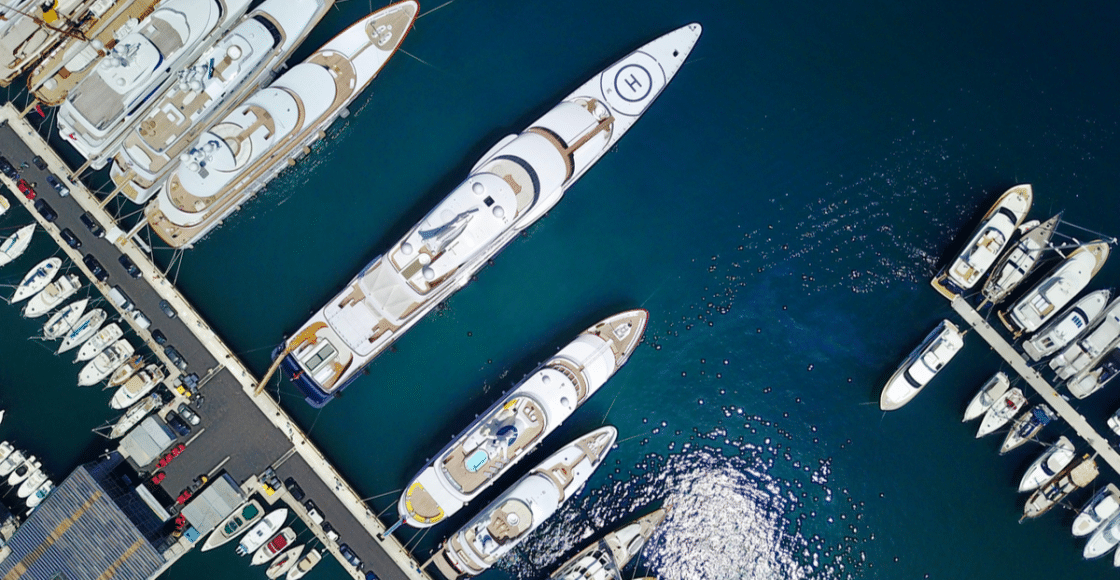
What Size Yacht is Best For You – Ultimate Guide to Choosing a Yacht

Table of Contents
Last Updated on May 19, 2022 by Boatsetter Team
Choosing a yacht is sometimes just as complicated as choosing a new car, if not more. Besides, choosing a yacht is often a lifetime investment, unlike our vehicles which have a shelf life of around 30 years at best. By understanding your preferences, educating yourself on your choices, and testing out some options, you can make an educated decision before making a purchase. Buying a yacht is not something you want to jump into without first weighing out your options.
The size of the yacht you choose will most certainly be an individual decision based on your goals and budget. From going to expos and boat shows to online forums, there’s no shortage of places to get information about yachts. It’s important to gain as much information as possible before making your final decision. This ultimate guide to choosing a yacht will ease the process of figuring out exactly what size yacht is best for you.
Preferences
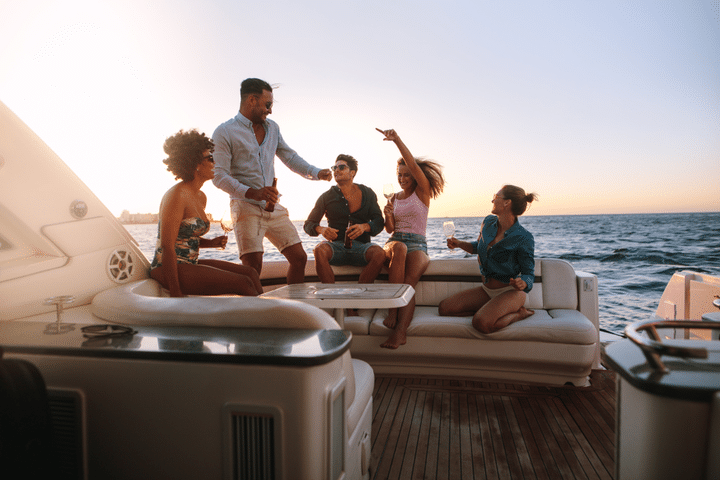
The first step you need to take when deciding on what size yacht is right for you is making a list of preferences. Take some time to think about what’s important to you. What kind of boating will you primarily be doing? Once you’ve figured out your preferences, the decision-making process becomes a whole lot easier. By eliminating choices that don’t fit your needs, you are left with a shortlist of good options.
What will you be using your yacht for most of the time?
This is an important question to ask yourself. Will you be spending multiple nights at sea with your entire extended family? Or will you mostly be making daytime fishing trips with your buddies? The size of your yacht will vary greatly depending on what end of the spectrum you’re on.
How many guests would you like to accommodate?
As with the above question, it’s important to figure out exactly how many guests you’d like to have onboard at any given time. While you may be getting your boat for intimate family trips, you may want to consider something bigger if you’re thinking of hosting birthday or bachelor parties.
What is your budget?
It’s a good idea to look at the short-term and long-term costs when deciding on what size yacht is right for you. Once you’ve made the initial purchase, the price of owning a yacht doesn’t end there. A bigger yacht will ultimately cost you more in transport, storage, operating, maintenance and repairs. This is also a good time to look into insurance and registration fees associated with owning a yacht.
Are you on board with buying something used?
If your preferences aren’t quite aligned with your budget, purchasing a pre-owned yacht may be a good option if you can’t find the right size in your price range. Just like buying a used car, buying a second-hand boat comes with both benefits and risks. Buying from a dealer will usually come with some sort of warranty, whilst purchasing a boat from a private seller could cost you considerably less.
Education

When deciding to take the plunge and buy a yacht , one of the crucial steps you need to take is educating yourself on the types and sizes of yachts available on the market. For most enthusiasts, buying a yacht isn’t a quick decision. Finding out exactly what’s out there will help you narrow down your choices. It’s easy to get distracted when researching online; the key is staying focused and take notes.
Do your research:
By this time, you’ve probably got an idea of the size and style you’re leaning toward. Find out if there are any boat shows, expos, or dealerships in your area. This is also a good opportunity to look up the registration requirements and insurance options, even if it’s just to get an idea of what to expect. There is so much information out there; fine-tune your focus and learn all you can.
Visit some of the local boat dealers in your area: Going to the dealership and looking around can give you valuable information about the yacht you’re thinking of purchasing. Most dealerships have experienced salespeople working who can answer questions and give recommendations. Additionally, most boat dealers will let you take tours of the yachts in their showroom.
Join social media groups or online forums:
Joining online yacht groups like those on Facebook and Twitter is a great place to seek answers when deciding on the right size yacht. Most yacht groups have some knowledge on the subject. The same goes for online forums like Reddit and Quora; a wealth of information at your fingertips if you ask the right people the right questions.
Subscribe to yacht and boating magazines :
Whether in print or online, subscribing to magazines like Yachting Magazine can give you up-to-date information on yachts and sailing. Subscriptions like Passagemaker even have a classifieds section for buying and selling boats. You don’t have to join a magazine club to get the most out of yachting-related publications; take a look online to see what sparks your interest and only subscribe to a few.
Check the ratings and reviews:
It doesn’t make sense to purchase a yacht with poor consumer reviews, especially if it’s due to mechanical issues. Many first-time yacht purchasers will think they found the perfect boat at a steal of a price; this would be a good time to check the reviews for that particular boat. Asking friends, club members, and online forums what the pros and cons are of owning a yacht of their particular size can give you a more personalized review.
Attend a boat show:
Boat shows, like visiting a dealership, allow you to check out potential yachts and sizes as well as pry for information. Most boat dealers aren’t going to spill out all the negative aspects reviewers have pinned on their product, but they will certainly be able to tell you if any of their models fit your preferences. This is also a good place to network with locals in your area who may be attending; introduce yourself as often as possible because you never know where a new friendship might take you.
Go to an expo:
Attending a boat or yacht expo will most likely leave you more confused than confident at first. It’s tempting to want to take a tour of the 130′ party boat or snap a selfie with the new space-age-looking prototype, but gaining information should be your primary goal. The advantage of going to an expo is that you are likely to come away with some reading material to mull over at home. Additionally, you’ll often find other vendors at these types of gatherings like insurance or financing options .
The Test Phase
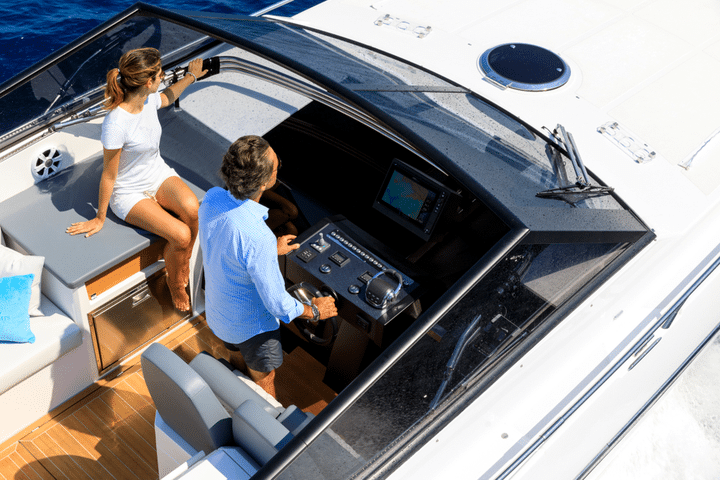
This is one of the most important steps when choosing the appropriate size yacht. There can be a point where your boat is just too big for your needs, budget, or storage capabilities. It’s not as easy to test drive a yacht as for a car, but there are some ways to try out a yacht before purchasing.
Tag along with others:
Chances are you know someone personally or indirectly with the same or similar yacht you are thinking of buying. This might take some finagling, but there’s a good chance someone will take you out. Once aboard, ask questions, explore the boat and ask for a turn at the helm .
Rent a yacht:
Renting a yacht is by far the best way to test out a few options. This method might be pricey, but there’s a good chance you’ll be able to rent a yacht that is the same or similar to the ones on your shortlist. Modern technology has created an avenue linking boat owners with boat seekers making this an easy, streamlined process.
Sizing Up Your Options
The test phase of this process should bring some insight into what size yacht suits your needs. By this time, you should have been able to narrow it down to three or four choices at best. This is a good time to revisit your preferences list to try and eliminate any contenders that don’t fully meet your size and lifestyle criteria. Think of it as a job applicant; you’re trying to narrow down your selection until you’re left with the perfect choice.
Fine Tuning Your Decision
If you haven’t been able to make a decision by now, you most certainly should have narrowed down your choices to two or three. If you are left with only two choices, it’s best to go bigger if that works for your budget and sailing capabilities.
If you’ve already decided on the size and are having trouble choosing between two manufacturers of yachts, this may be a time to revisit and update your preferences. Outside of size, style, comfort, and capability options, what else is important to you. Are you interested in buying products that are made locally? Is the environmental impact of the yacht and manufacturing practices important to you? Going beyond the surface preferences can most often seal the deal, but you will need to go back and do some more research.
Taking the Plunge
If you’ve figured out your preferences, done your research, and tested out your options, you’re ready to make your purchase. Owning a yacht of any caliber is an accomplishment since the decision-making process alone can be taxing. Aside from figuring out an appropriate size, potential captains are also faced with storage, insurance, and registration decisions which add to the effort and excitement of buying a yacht.
There’s nothing like feeling the water moving beneath you as you make the way to the helm of your new yacht. While the steps you need to take to decide what size yacht is best for you may seem time-consuming, you’ll be on the water in no time. Taking the time to make the most educated decision will serve you well in the long run with less anxiety about a big purchase. The online forums and social media sites boast grand adventures for yacht owners with very few stories of buyer’s remorse.

Boatsetter empowers people to explore with confidence by showing them a world of possibility on the water. Rent a boat, list your boat, or become a Boatsetter captain today.
Browse by experience

Explore articles

How to Make an Old Boat Look New
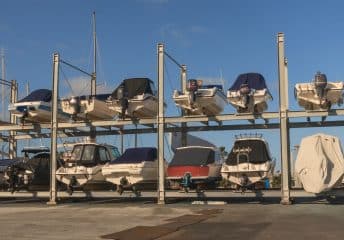
Calendar Tooltips: Blocking Out Dates for the Off-Season
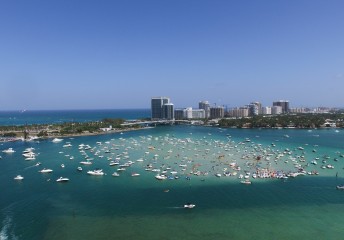
Everything You Need to Know About Sandbar Parties
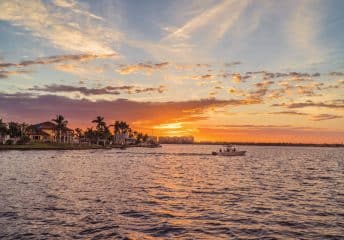
4 Amazing Cape Coral Beaches
When is a Boat a Yacht?
Types of yachts – sizes, styles, & categories.
With so many different types of yachts to choose from, it can be hard to know your Flybridges from your Tri-Decks if you’re just starting your search. Although there is a growing number of terms used to describe the different types of yachts out there, many of the terms overlap or are used interchangeably.
If you’re on the market for a yacht, the team here at Van Isle Marina has compiled a review of the different terms you’ll likely come across when cruising through yachts for sale .

a luxury motoryacht
Below is our brief guide to understanding the different terms the boating community has been known to use to describe yachts.
Definition of a Yacht
What exactly makes a yacht a yacht, and not just a big boat? There is no nailed down definition of what makes a yacht a yacht, but most boaters consider a yacht to be any type of sea vessel that is used strictly for recreational or pleasure purposes like cruising , entertaining, water sports, fishing , or year-round accommodations.
Yachts are usually large enough to have some form of sleeping quarters (cabin) on board for overnight trips as well as a kitchen (galley) and a bathroom (head). They are also large enough that they require more than human inputs (i.e rowing) to propel forward.
Yachts are classed by many things, including their mode of propulsion, size, style, amenities, and function.
General Types of Yachts

a sailing yacht
A yacht is first defined either as a sailing yacht, motor yacht, or gulet yacht, and then as a sports or luxury yacht.
- Sailing Yacht: a yacht mainly propelled via wind and sails
- Motor Yacht: a yacht propelled via one or more motors
- Gulet Yacht: a hybrid yacht with both sails and motors
- Open Yacht, Cruiser, Cabin Cruiser, Express Cruiser: an otherwise uncategorized standard yacht for cruising and entertaining
- Luxury Yacht: a yacht that includes high-end finishes and features and the latest in modern performance technology. The term ‘luxury’ can precede any type of yacht, i.e. “luxury motor yacht”, “luxury sailing yacht”, etc.
- Sports Yacht: a yacht geared towards fishing, water sports, or cruising with a sleeker design and more powerful motor for faster cruising speeds. The term ‘sports’ can precede other types of yachts as well, i.e. “sports motor yacht”.

a catamaran
Yacht Sizes
Yachts can further be defined as a superyacht or megayacht, depending on their size.
- Super Yachts are typically 24 meters (78 feet) and above.
- Mega Yachts are typically over 80 meters (260 feet).
Most motor yachts on the market are typically 24 meters (78 feet) or less. There are only a handful of megayachts in the world due to their extravagant price tag.
Yacht Style Categories
Yachts can further be grouped or defined according to their form and function, such as with flybridge, sedan, pilot house, and sportfish yachts, for example.
- Classic Motor Yacht: a yacht that was built between the 1920s and 1970s (before today’s modern technology began dominating modern yacht manufacturing). A modern yacht can be built based on the classic motor yacht style.
- Sedan: a popular yacht style with deck space above the hull and living quarters below. The living quarters of a sedan yacht are enclosed and single-level.
- Flybridge: a sedan-style yacht with an open deck and more comfortable living space above the main bridge of a vessel.
- Daybridge: a multi-level yacht that is even more open than a flybridge. Belize Motoryachts are known for creating this distinctive style of yacht.
- Open or Enclosed: a term used to describe the layout of and access to the flybridge. In an enclosed flybridge, access to the above flybridge is enclosed inside the living space. In an open flybridge, access to the flybridge above is open to the elements.
- Downeast Style: a low-profile yacht with a large working cockpit and small helm station. This highly recognizable style is inspired by the mid-1900s traditional Maine lobster boat. Back Cove yachts are a shining example of downeast-style inspired yachts.
- Pilothouse: A multi-deck yacht like a flybridge with a larger interior main deck.
- Sky Lounge: an enclosed area at the top of the vessel that provides the benefits of the view but with several amenities, protection from the elements, expansive windows and sometimes a sunroof.
- Cockpit Motor Yacht: a yacht with more cockpit space than deck space.
- Sportfish or Sport Fishing Yacht: A yacht used for fishing with a large cockpit, storage space, and the ability to handle rougher seas. These can also be referred to as Flybridge Sportfish or Sportfish Express and are built for longer durations out on the water.
- Convertible: a yacht that combines features of a standard motor yacht with a sportfish yacht to have entertaining space when you need it, and also fishing space when you need it.
- SUV: a yacht that combines features of a standard motor yacht and sport yacht.
- Tri-Decks : a superyacht with three levels of staggered, enclosed living space.
- Expedition Yachts: a large yacht with a deeper displacement hull for more stability and comfort during longer-range trips.
Read a few descriptions of yachts for sale and you’ll soon realize the boating community sometimes seems to have its own language. To accompany this roundup of yacht types, check out our Parts of a Boat post for more information, or jump right into checking out some of the models we at Van Isle Marina have for sale right now.
250 656 1138
2320 Harbour Road, Sidney, British Columbia V8L 2P6 [email protected]
Marina Services
Marina Layout
Yacht Sales
- Link to Facebook
- Link to Instagram
©2024 Van Isle Marina | Design by Caorda
Get your card today

- Pre-paid code

- Buy a Gift Card
Boat Sizes: Chart, Classifications and Length
To operate a boat safely and legally, you need to have the right type of safety equipment on board at all times. But how can you know what type of equipment is required for your specific type of boat?
The key is discovering your boat’s class .
And boat classes are determined by boat length .
Let’s take a look at the four different classes of recreational boats, so that you can be prepared when you take to the water.
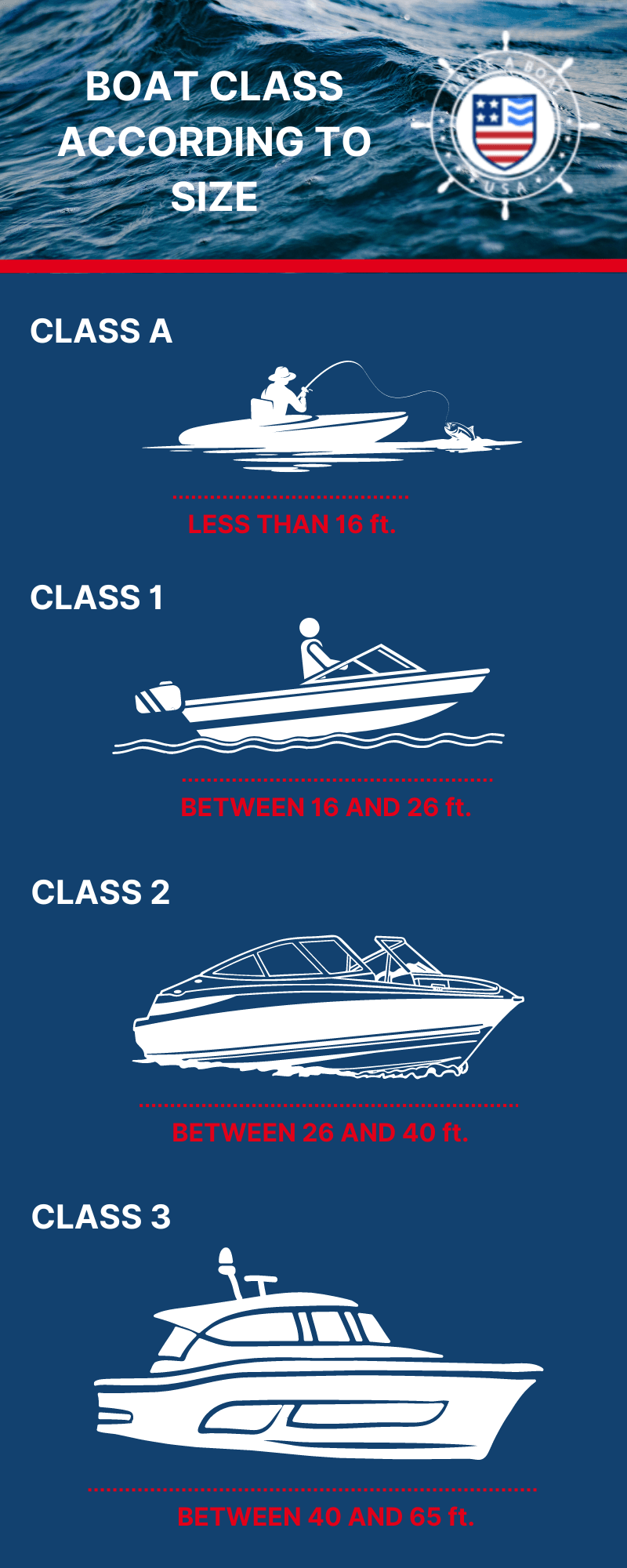
How to measure your boat
You can measure your boat along its centre line from bow to stern, not including any extra attachments like swim platforms. Check out our page outlining the parts of a boat to help you make an accurate measurement.
Class A: Boats measuring less than 16 feet
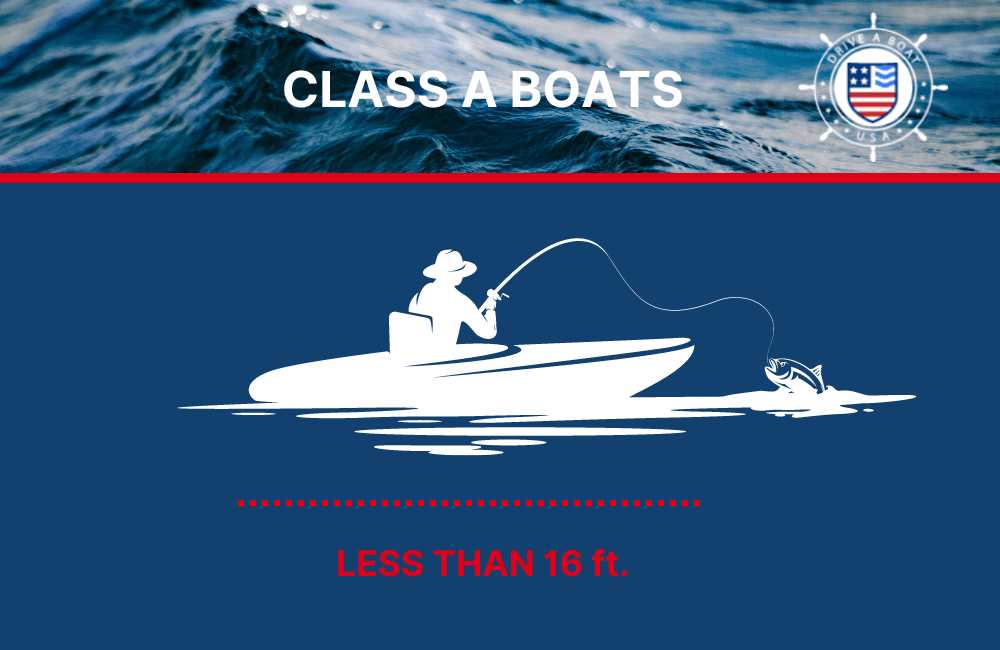
This class includes small fishing boats, canoes, dinghies, personal watercraft and rowboats. To operate this class of boat safely, you need to have:
- Personal flotation devices (PFD) for each person on board or being towed on water skis, etc.
- A bell or whistle
- Visual distress signals (for certain bodies of water) for night-time use
- A fire extinguisher (depending on several factors)
- Ventilation
- A back-fire flame arrestor
Class 1: Boats measuring between 16 and 26 feet

This class includes pontoon boats, jet boats, aluminum fishing boats, smaller deck boats and ski boats. To operate this class of boat safely, you need to have:
- One approved Type I, II or III personal flotation device (PFD) for each person on board or being towed on water skis, etc. and one throwable Type IV device
- Visual distress signals for day and night-time use
Class 2: Boats measuring between 26 and 40 feet
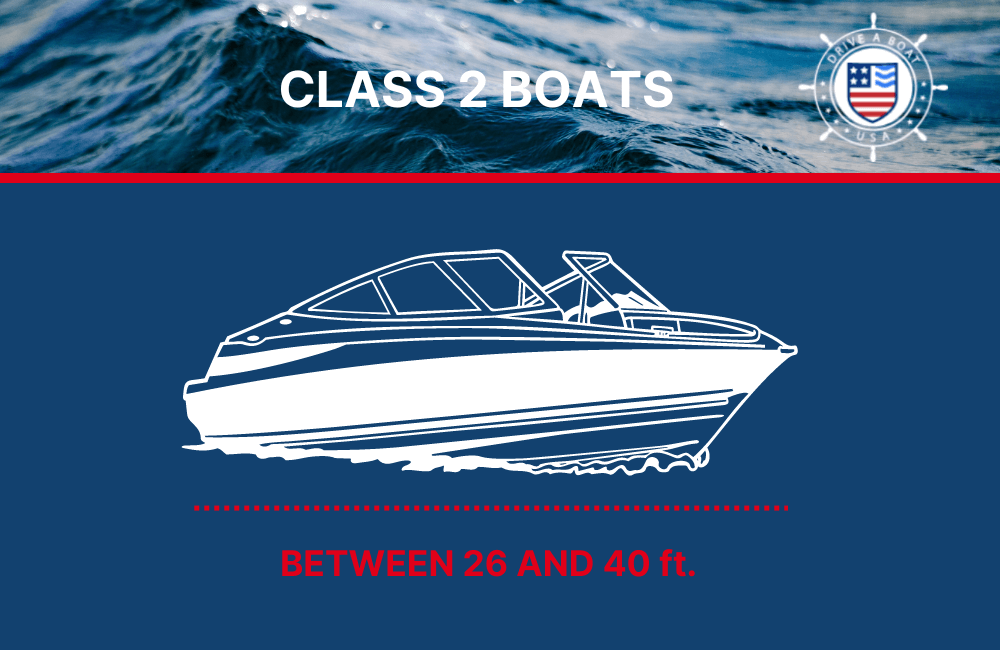
This class includes cabin cruisers, trawlers, sail boats, bowriders and runabouts. To operate this class of boat safely, you need to have:
- A bell or whistle that is audible for 1 nautical mile
- 2 fire extinguishers
Class 3: Boats measuring between 40 and 65 feet
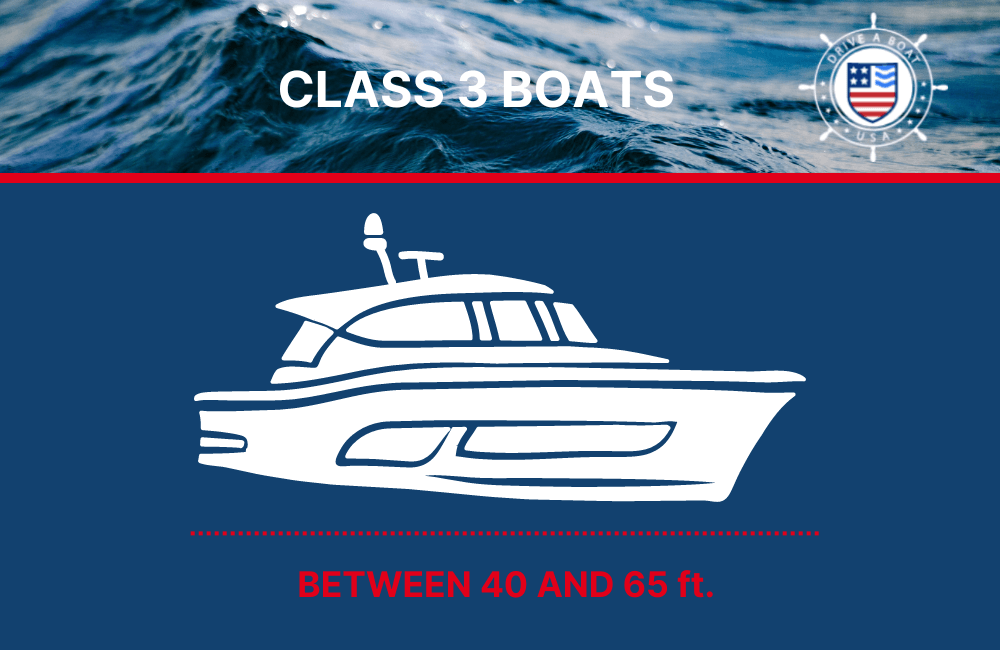
This class includes yachts, sport fishers, catamarans, sail boats and go-fast boats. To operate this class of boat safely, you need to have:
- 3 fire extinguishers
Remember that there could be some variations in the specific type of equipment you need, even within these categories. The best way to be certain that you are prepared to go out on the water is to get your official online state approved boating license .
Learn how to equip your boat with Drive a Boat USA
Whether your boat falls into Class A, 1, 2, or 3, you are responsible for keeping the right safety equipment on board at all times.
Learn what you need to know to enjoy safe and successful boating adventures, including how to drive a boat , from Drive A Boat USA.
Contact us today to earn your official state-approved boating license and take to the water!
- USA Boating
Latest Posts
- Boat Right of Way Rules and Power-Driven Vessel Path Crossing
- What is Needed for Steering Control on a PWC?
- Downstream vs Upstream in a Boat: What’s the Difference?
- Boat Propeller Strike: Avoiding Injuries and Accidents
- Starboard Side and Port Side Explained
- February 2024
- December 2023
- October 2023
- September 2023
- January 2023
- November 2022
- Get certified now
- Replacement California Boater Card

What Do Boat Measurements Mean? 11 Terms Explained!
Boat measurements are more than just numbers; they are the essence of maritime safety, efficiency, and compatibility.
Navigating the intricate world of boat measurements is crucial for anyone in the boating industry, from manufacturers to enthusiasts.
Understanding these measurements ensures proper vessel selection, compliance with marina requirements, and safe navigation in various water conditions.
Below we delve into the key aspects of how boats are measured and the main terms used, providing you with the essential knowledge to engage with the maritime world confidently.
11 Main Boat Measurement Terms
These are 11 main boat measurement terms with expanded descriptions and examples for better understanding:
- Length Overall (LOA) : This is the total length of the boat from the tip of the bow to the end of the stern. It’s the most common way to describe the size of a boat. LOA is important for determining mooring space, marina fees, and navigating in confined waters. For example, a boat with an LOA of 30 feet will need a berth slightly longer than 30 feet. For stability calculations, you should refer to LBP or length between perpendiculars .
- Length on Deck (LOD) : This measures the horizontal length of the boat’s hull excluding any extensions like bow sprits or swim platforms. LOD is used to provide a more accurate measurement of the usable space on the boat. A boat might have an LOA of 35 feet but an LOD of 30 feet if there’s a 5-foot bow sprit.
- Beam : The beam is the width of the boat at its widest point. It’s crucial for stability; wider beams generally provide greater stability. The beam also affects a boat’s capacity and maneuverability. For instance, a boat with a beam of 10 feet might be more stable but less maneuverable than a boat with an 8-foot beam. More about boat beam read here .
- Draft : Draft measures the minimum depth of water a boat requires to float. It’s key for determining where a boat can safely navigate. A sailboat with a draft of 6 feet can’t enter waters less than one fathom or 6 feet deep without risking running aground.
- Displacement : This is the weight of the water displaced by the boat’s hull. It roughly equates to the boat’s weight when fully loaded. Displacement impacts how a boat handles and its fuel efficiency. A boat displacing 5 tons will handle differently than one displacing 2 tons.
- Freeboard : The distance from the waterline to the upper deck level, indicates how much of the boat is above water. A higher freeboard can mean a drier and potentially safer ride in rough conditions. For example, a boat with 4 feet of freeboard will handle choppy water better than one with 2 feet of freeboard.
- Deadrise : This is the angle of the boat’s hull relative to a flat surface. A higher deadrise (sharp angle) helps cut through waves, providing a smoother ride in choppy conditions. A boat with a 20-degree deadrise will generally perform better in rough water than one with a 10-degree deadrise. Learn more about boat deadrise in a detailed article.
- Air Draft : This is the height of the boat from the waterline to its highest fixed point. It’s important to determine if a boat can fit under fixed bridges or other overhead obstructions. A sailboat with a mast height (air draft) of 50 feet needs to consider bridge clearances on its route.
- Gross Tonnage : This volume measurement is used for large vessels and is calculated based on the total internal space of the ship. Ship tonnage is important for regulatory, safety, and commercial purposes. A cargo ship with a gross tonnage of 50,000 indicates its large size and capacity.
- Ballast : This is the weight (often lead or water) added low in the boat to improve stability. Ballast is particularly important in sailboats to counterbalance the force of the wind. A sailboat with 2,000 pounds of ballast will heel (lean) less and be more stable than one with 1,000 pounds.
- Waterline Length (LWL) : The length of the boat at the waterline, can be shorter than the LOA due to overhangs. LWL affects speed and stability; longer waterline lengths generally allow for higher speeds. For instance, a boat with an LWL of 25 feet may be faster than one with an LWL of 20 feet.
Each of these measurements plays a critical role in the design, functionality, and performance of a boat. They are essential for builders, designers, and users to understand the capabilities and limitations of a vessel in various conditions.
How Do You Measure A Boat Hull?
Measuring a boat hull involves determining several key dimensions that are critical for understanding the boat’s design, performance, and suitability for certain conditions. Here are the main measurements taken for a boat hull:
- Length Overall (LOA) : Measure from the furthest point forward ( bow ) to the furthest point aft ( stern ), including any overhangs.
- Length on Deck (LOD) : Measure the length of the deck, excluding overhangs.
- Waterline Length (LWL) : Measure the length of the boat at the waterline, which may be different from the LOA due to the hull shape and overhangs.
- Beam : Measure the widest part of the boat hull, which is usually found at or near the midpoint of the boat’s length. The beam measurement is crucial as it affects stability and interior space.
- Draft : Measure the vertical distance from the waterline to the lowest part of the hull (usually the bottom of the keel ). This tells you how deep the water needs to be for the boat to float without hitting the bottom.
- Freeboard : Measure the distance from the waterline to the upper edge of the hull. This measurement gives an idea of how high the boat sits in the water and can affect how dry the boat stays in rough conditions.
- Deadrise : This is the angle between the hull bottom and a horizontal plane at the boat’s beam. It’s measured in degrees and indicates how the hull will handle different sea conditions. A higher deadrise usually means better performance in rough water.
- Hull Depth : Measure the distance from the deepest point of the hull to the top of the deck. This gives an idea of the overall volume of the hull.
These measurements are typically made using measuring tapes, laser measuring tools, or, in the design phase, through CAD (Computer-Aided Design) software. Accurate hull measurements are essential for boat builders, designers, and owners, as they influence the boat’s capacity, stability , speed, and seaworthiness.
How Does the Coast Guard Measure Boat Length?
The U.S. Coast Guard measures boat length primarily based on the Length Overall (LOA) method. This approach involves measuring the boat from the tip of the bow in its most forward position to the end of the stern in its most aft position.
This includes all structural and integral parts of the boat but does not include removable attachments and fittings such as outboard motors, bow pulpits, rudders , and similar extensions.
It’s important to note that the Coast Guard’s measurement for boat length can differ from how length is defined for registration or documentation purposes, or how it might be described by manufacturers or in boating literature.
For instance, Length on Deck (LOD) or Waterline Length (LWL) might be used in different contexts but are not the standard measurements the Coast Guard uses for defining a boat’s length.
The Coast Guard’s method of measuring boat length is significant for regulatory and safety reasons. For example, certain boating laws, safety requirements, and regulations apply differently to boats depending on their length class. Therefore, accurate measurement is crucial for compliance with federal and state boating laws .
- Recent Posts
- Sustainable and Luxurious: Discovering Split’s Yachting Paradise – April 26, 2024
- MarineTraffic vs VesselFinder: Which Is Better Vessel Tracking Service? – February 14, 2024
- Port Costs: A Comprehensive Guide to Port Dues and Fees for Cargo Ships – February 12, 2024
About the author
I worked as an officer in the deck department on various types of vessels, including oil and chemical tankers, LPG carriers, and even reefer and TSHD in the early years. Currently employed as Marine Surveyor carrying cargo, draft, bunker, and warranty survey.
Leave a Reply Cancel reply
Your email address will not be published. Required fields are marked *
Save my name, email, and website in this browser for the next time I comment.
Latest posts

Marine Satellite Internet: How Ships Keep Connected
Some boaters take leisurely trips to the lake while others venture into the ocean, far removed from the rest of civilization. Thankfully, marine satellite internet helps ships stay connected.

What to Wear on a Boat
Sailing on a ship requires extensive preparation. In addition to understanding its components and how to operate it, people must also know what to wear on a boat.

What Happens if a Ship Loses Power?
A power outage is among the worst issues for maritime professionals. What happens if a ship loses power?

IMAGES
VIDEO
COMMENTS
1. Luxury Yacht. Yachts are normally classified as any watercraft that can be used for pleasure or sport and can range from 30 ft to over 100 ft. While a yacht can be as small as 30 ft. long, a yacht is often considered a cabin cruiser until it is 39 ft. or more, then it is considered a proper yacht.
Yachts are classified by size into several categories: Day sailing yachts are usually under 20 feet (6 meters); Weekender yachts span 20 to 30 feet (6 to 9 meters); Cruising yachts range from 30 to 50 feet (9 to 15 meters); Luxury yachts are typically 50 to 100 feet (15 to 30 meters); Superyachts extend from 100 to 200 feet (30 to 60 meters), and Megayachts exceed 200 feet (60 meters).
The internal volume is a function of length, breadth and height. In walking the docks, comparison of side by side vessels of equal length immediately identifies the variables of beam and height. Yachts between 40 meters and 50 meters could feasibly have equivalent internal volume dependent on beam and the number of decks.
40-100+ feet. Expedition Yacht. 70-400+ feet. Flybridge Yacht. 50-150+ feet. Sports Fisher Yacht. 30-70+ feet. A guide to yacht anchor types and sizes is vital for understanding the different types and sizes available in the yacht industry. For more information, check out a guide to yacht tenders.
A Generic 34 may be 32ft long, for example, and a White Boat 37 could be 39ft. The North Sea 24 (an ancestor of the Rustler 36) is actually 31ft long - 24ft was her waterline length which used to be the minimum required by RORC. Some builders overstate their boats' lengths in model numbers to make the price tag look like better value, while ...
Yacht Type: Length (ft) Width (Beam) (ft) Height (ft) Draft (ft) Gross Tonnage (GT) Sailing Yachts: 30-100: 8-20: 10-30: 0.2-5.9: 5-150: Motor Yachts: 35-200: ... but it means the yacht can't go into shallow areas. The yacht's height affects how much wind it can catch, which helps determine how far a yacht can travel and makes it more ...
60 - 80 meter motor yachts. Here the yachts grow much larger, and so do the costs of maintenance. A yacht of 60 meters length will have a crew of 20-23 members. A yacht of 80 meters length can have a crew of up to 80 members. The maximum number of guests will depend on yacht registration type.
Cruising Yachts: Usually measuring 40-50 feet, these combine comfort and storage for longer voyages. Luxury Yachts: At 50-100 feet, they often come with indulgent amenities and can accommodate guests and crew. Superyachts: Exceeding 100 feet, these are the epitome of nautical splendor, with bespoke features and unparalleled luxury.
When most people ask, "How big is a yacht?" they have an image in mind of a standard-size luxury yacht. Yachts are typically anywhere between 30 feet and 100 feet long. Standard luxury yachts tend to be under 78 feet long, and any bigger than that gets you into the superyacht and megayacht categories.
Choosing the right size and length for your yacht is crucial, and we'll help you figure out what's best for you. Consider factors such as intended use, guest capacity, and where you plan to sail. We'll guide you through balancing size with manageability and cost. Get the information you need to pick a yacht that's comfortable, practical, and fits your yachting ambitions, ensuring you make the ...
This list of motor yachts by length, is a table of the world's longest active superyachts, with an overall length of at least 75 metres (246 ft) and up.. These boats are also known as "megayachts", "gigayachts" and even "terayachts", usually depending on length. It has been generally accepted by naval architects and industry executives that superyachts range from 37 m (≈120 ft) to 60 m (≈ ...
The distinction usually becomes clear at around 33 feet, with yachts typically starting at this length. 40-100 feet: This range represents the sweet spot at which your vessel would undoubtedly be considered a yacht. As your boat approaches 100 feet, it might even start to qualify as a medium yacht.
It's also what helps to determine boat classifications. Width - To measure the width of a boat is to know its beam, which is its upper surface's widest extent. The average width of a boat is 8 fee. Height - This is concerned with the distance between the beam's highest point up to the bottom-most portion of the hull.
A. Small Yachts. Small yachts are typically less than 40 feet in length and are perfect for short trips and intimate gatherings. They are ideal for those who want a simple, low-maintenance vessel that is easy to handle. B. Mid-Size Yachts. Mid-size yachts are typically between 40 and 80 feet in length.
Boat-Specs.com is an interactive database that allows you to discover and compare various sailboats and sailing yachts through their specifications. The multi-criteria search engine helps you to find exactly the boat you are looking for. Sailing boats (1605) Sailboat builders (93) Sailboat designers (150) Sailboat ranges (47) Sailboat ...
This should include the length, width, height and any other characteristics relevant to the design of the yacht. Define the design goals and objectives of the yacht, including the purpose and function of the yacht, how it will be used, and what type of sailing or other activities will take place on it.
What size yacht. Most charter yachts range from 30 to 50 feet (9-15 metres), have between 2 and 6 cabins, 1 to 4 toilets and showers (known as heads) and sleep from 4 to 12. Generally, the large the yacht, the more cabins and heads you get, so to an extent the number of berths (beds) you need will determine how big you need to go.
Joining online yacht groups like those on Facebook and Twitter is a great place to seek answers when deciding on the right size yacht. Most yacht groups have some knowledge on the subject. The same goes for online forums like Reddit and Quora; a wealth of information at your fingertips if you ask the right people the right questions.
Yacht Sizes. Yachts can further be defined as a superyacht or megayacht, depending on their size. Super Yachts are typically 24 meters (78 feet) and above.; Mega Yachts are typically over 80 meters (260 feet).; Most motor yachts on the market are typically 24 meters (78 feet) or less.
Class 3: Boats measuring between 40 and 65 feet. This class includes yachts, sport fishers, catamarans, sail boats and go-fast boats. To operate this class of boat safely, you need to have: One approved Type I, II or III personal flotation device (PFD) for each person on board or being towed on water skis, etc. and one throwable Type IV device.
Common Motor Yacht Sizes: 40-49 Feet >>> Perfect size yacht for couples and small families. Motor Yachts in the 40-50 foot range make great starter yachts and can be owner operated. In this range, motor yachts will typically highlight 1-3 staterooms, sleeping anywhere from 2-6 people.
Bow - The front of the boat. Stern - The rear end of the boat. PortSide - The left-hand side of the boat, when facing the bow. Starboard Side - The right-hand side of the boat, when facing the bow. Amidships - The central part of a vessel. "Port" and "starboard" tend to be some of the first terms that throw people off.
These are 11 main boat measurement terms with expanded descriptions and examples for better understanding: Length Overall (LOA): This is the total length of the boat from the tip of the bow to the end of the stern. It's the most common way to describe the size of a boat. LOA is important for determining mooring space, marina fees, and ...